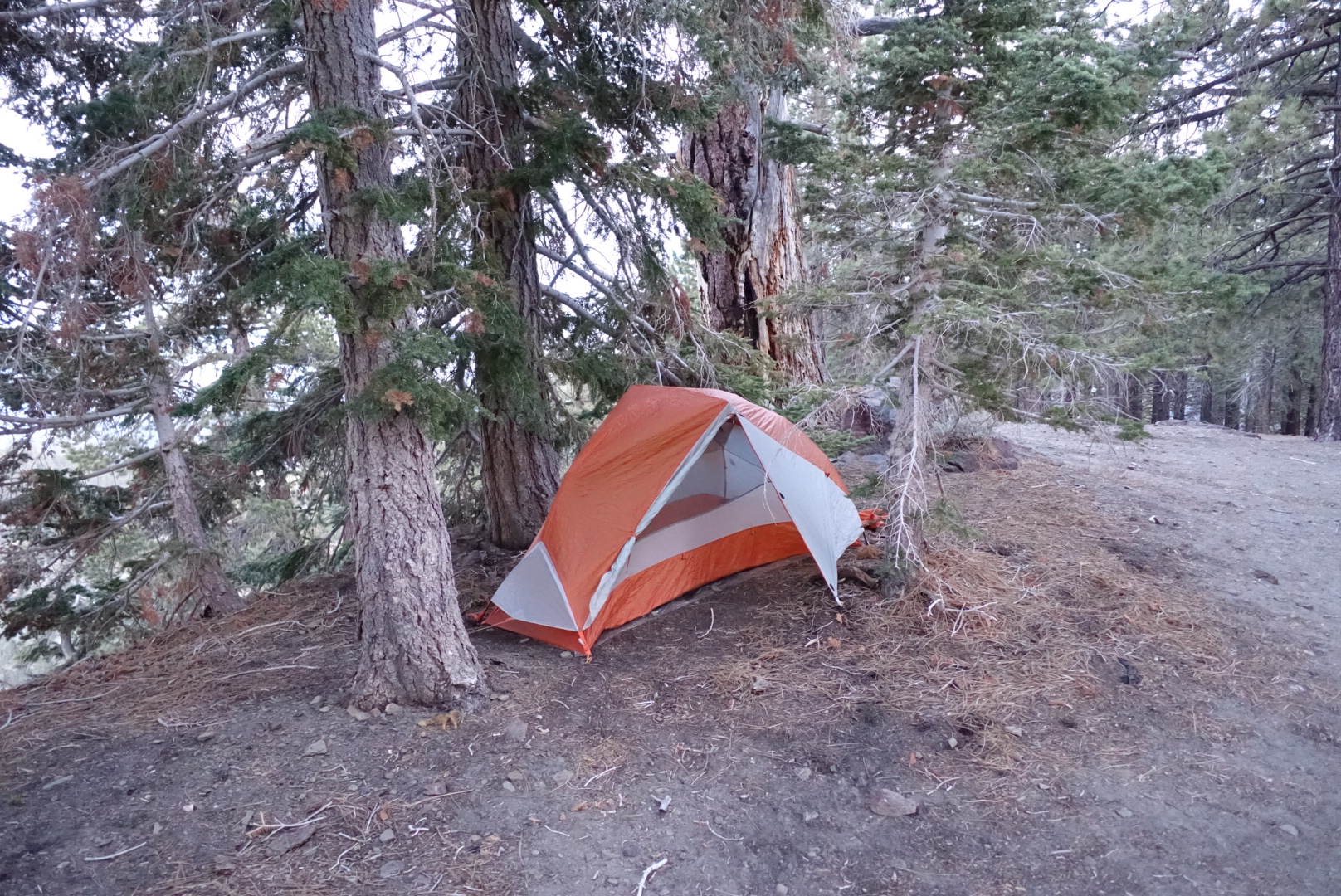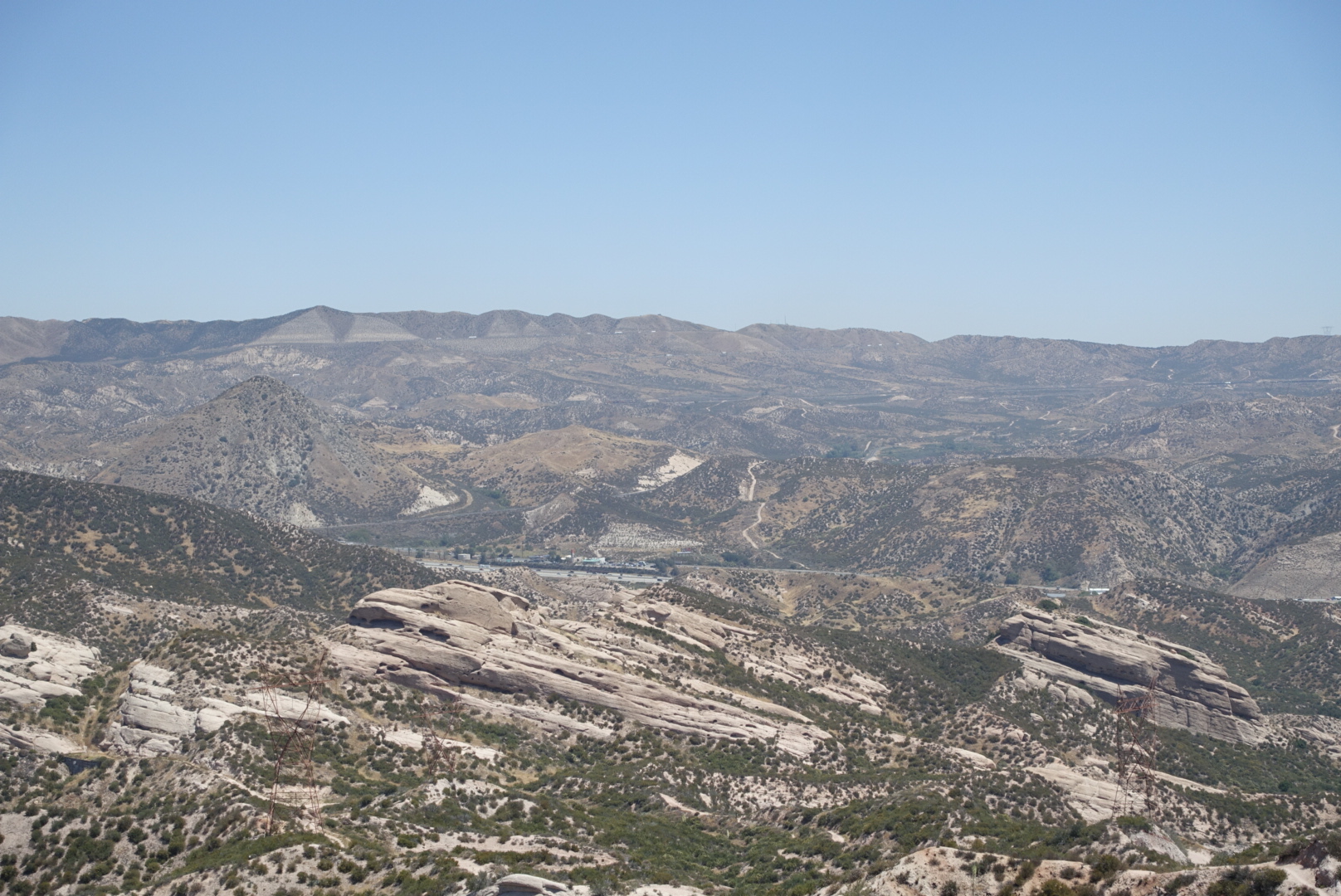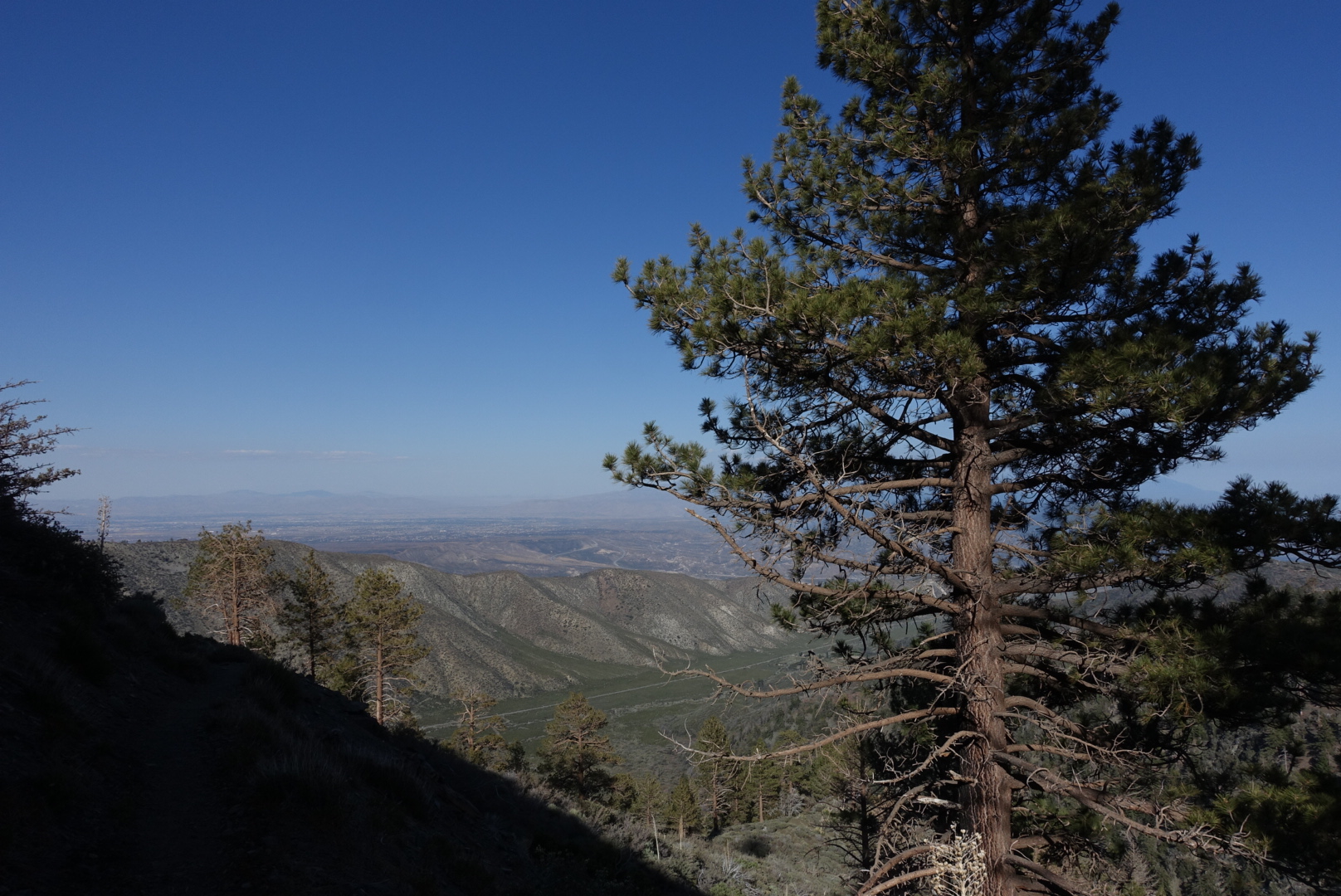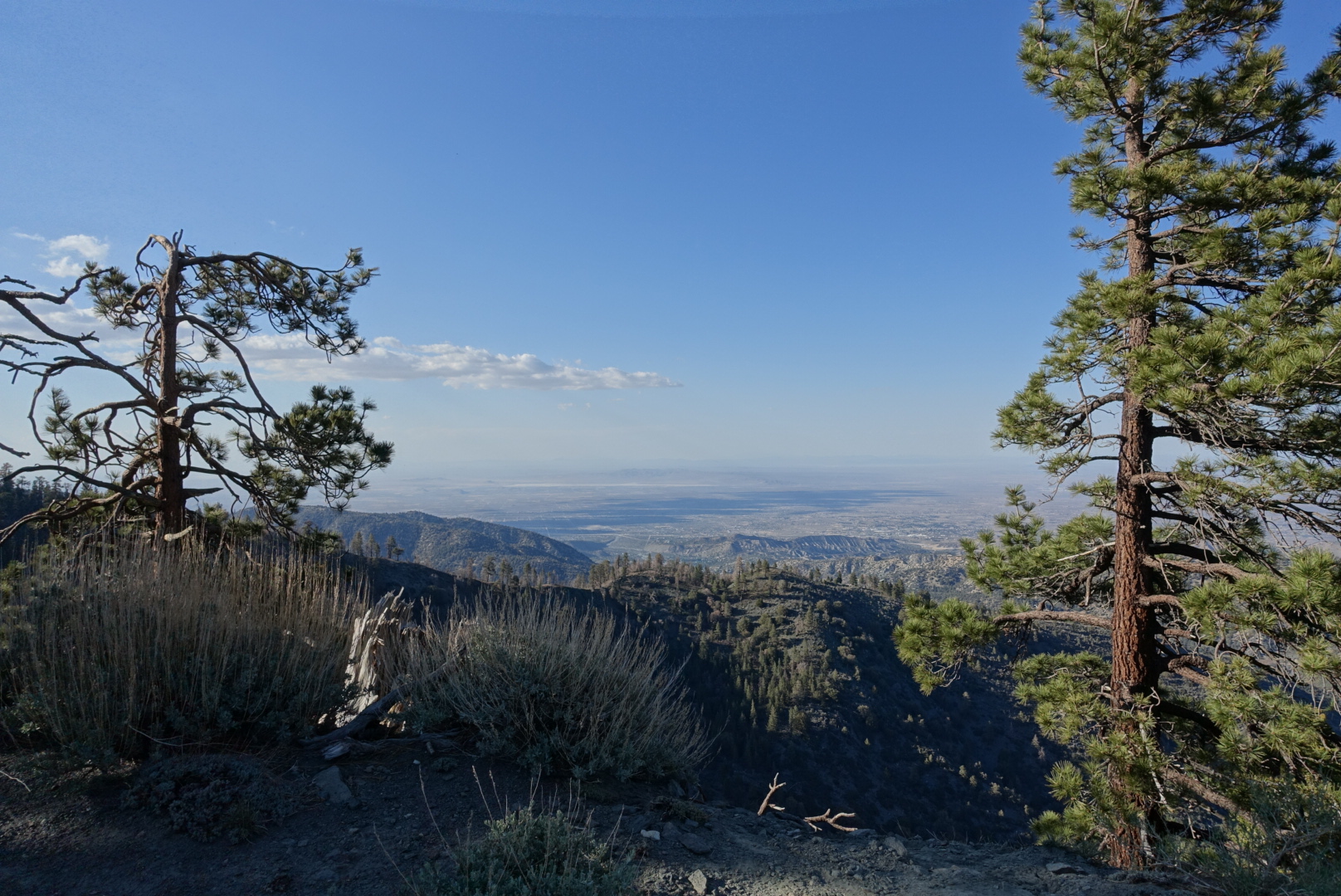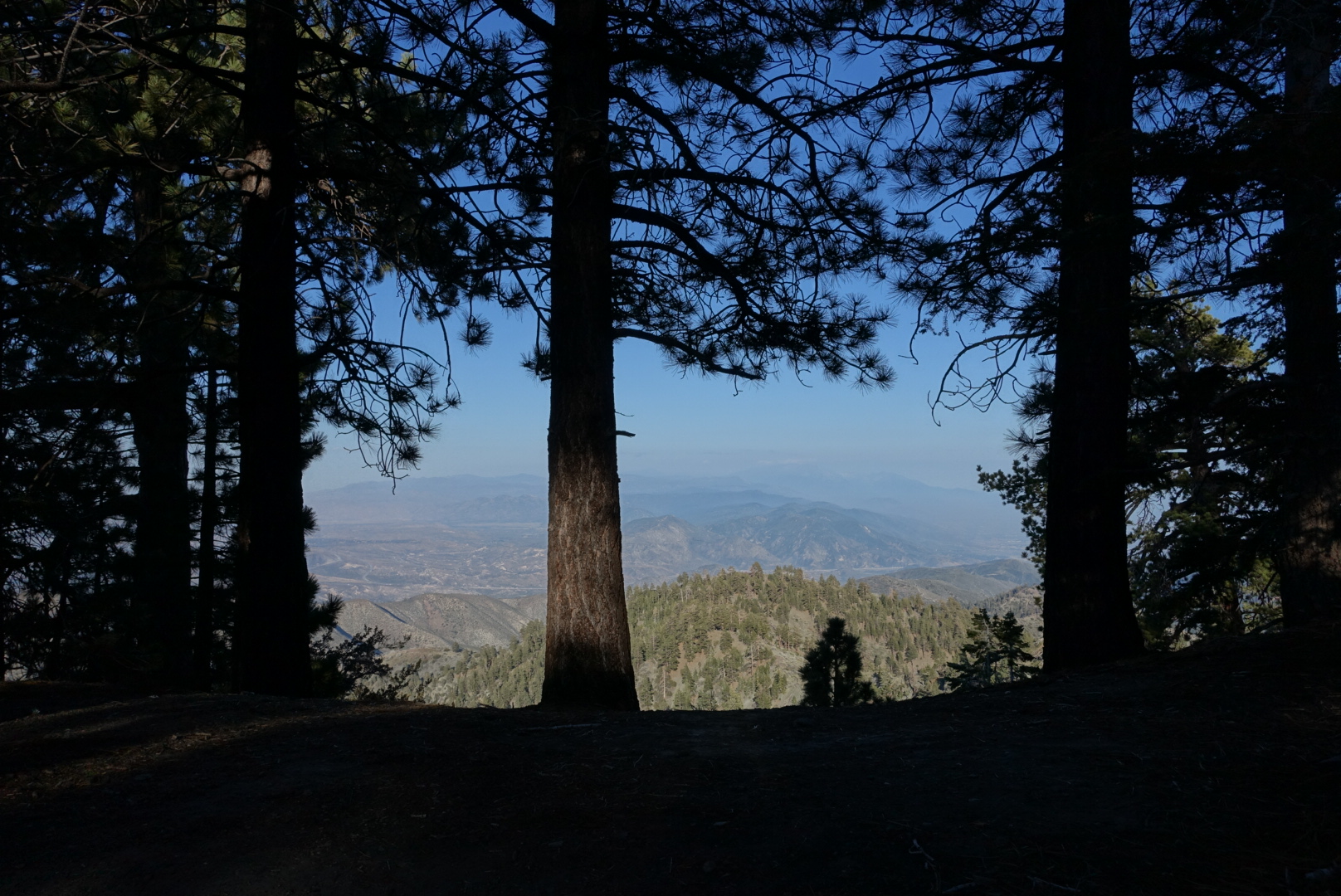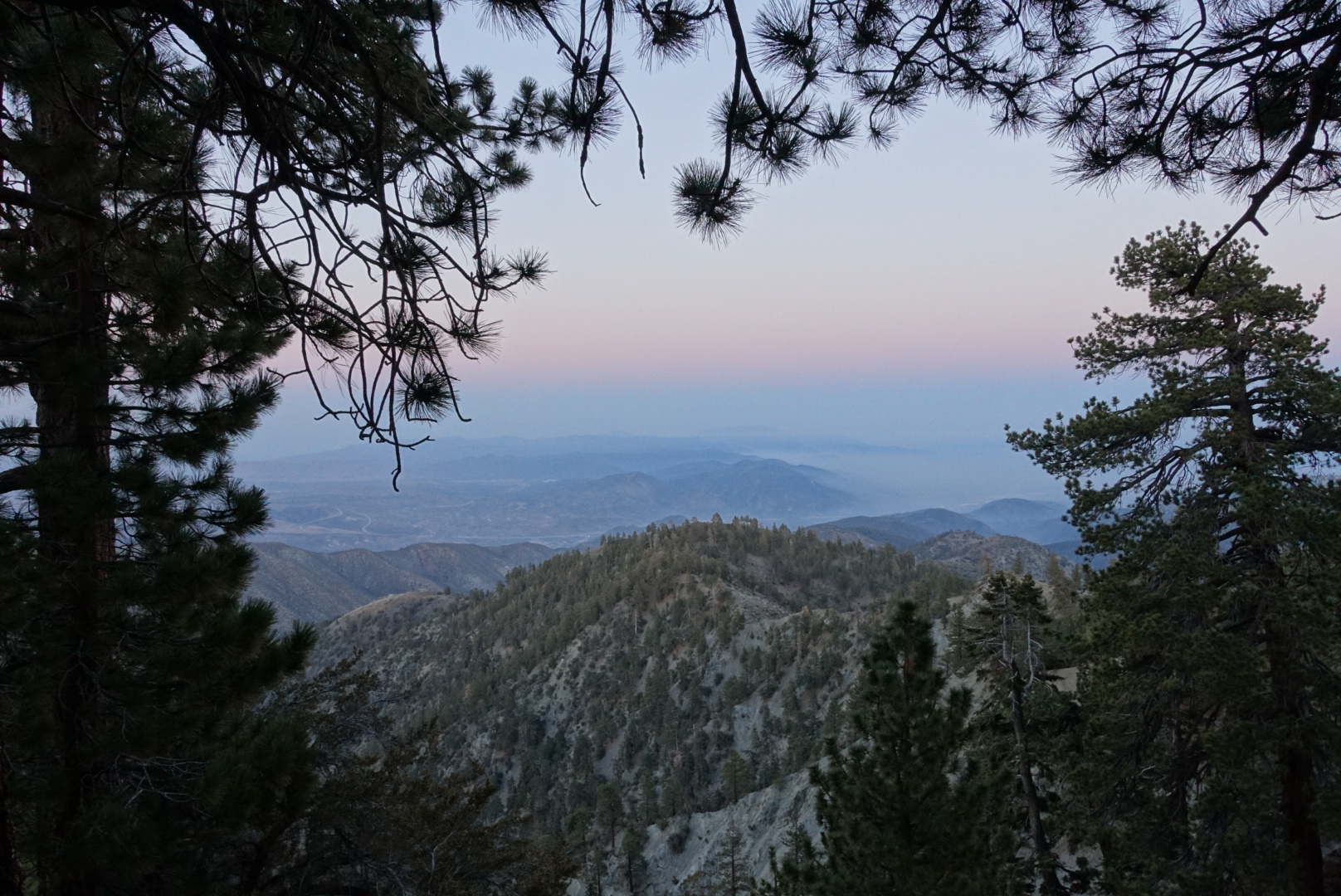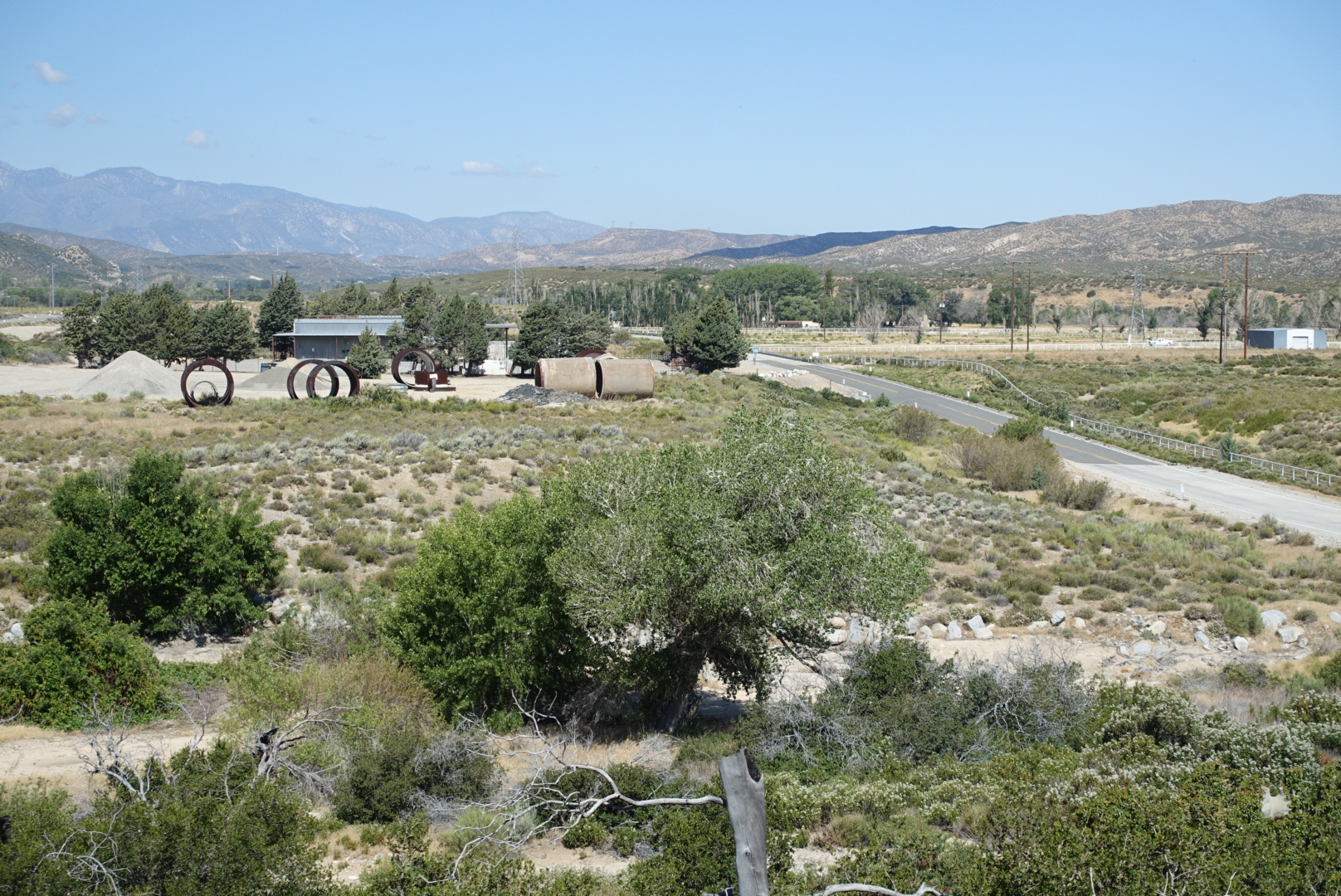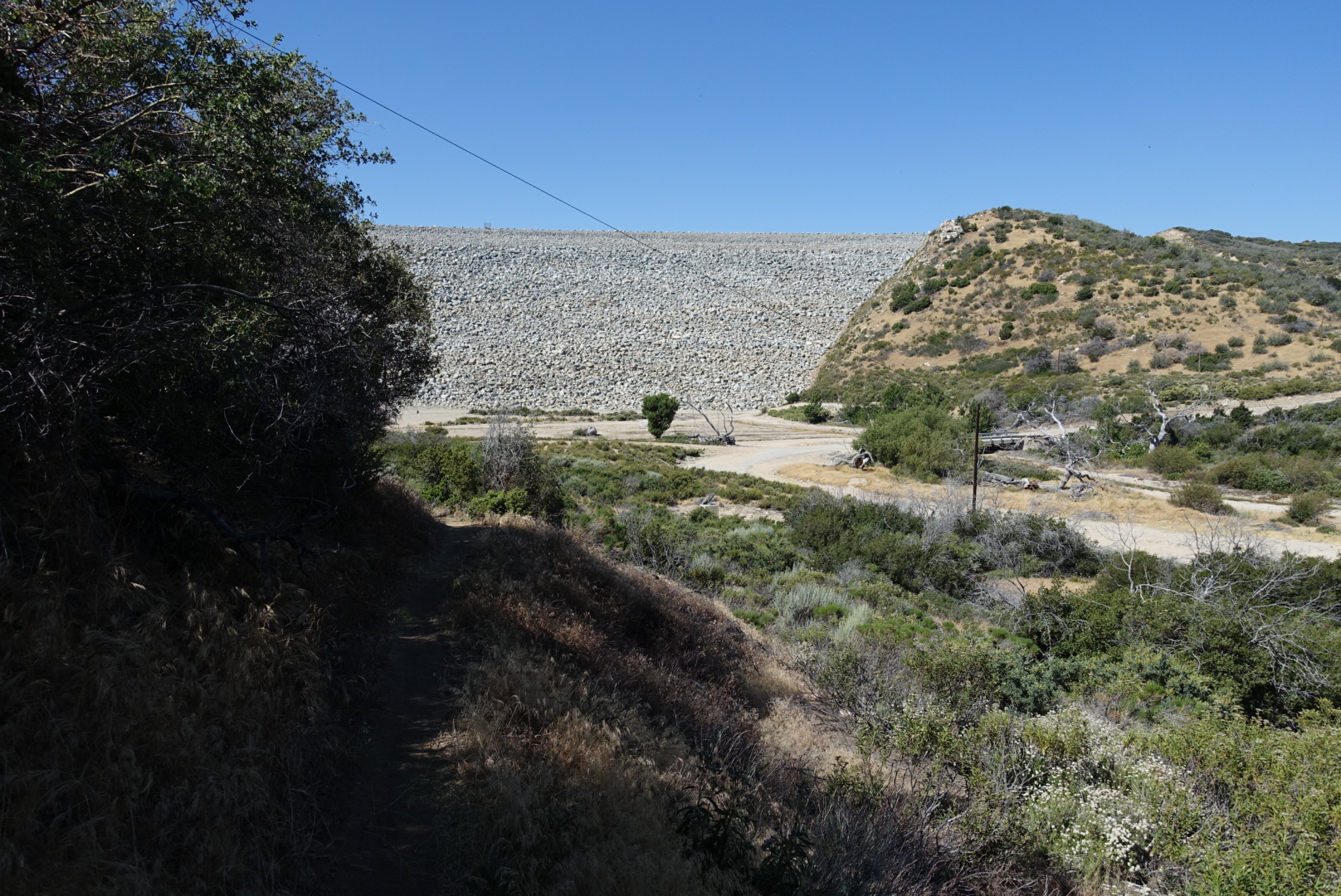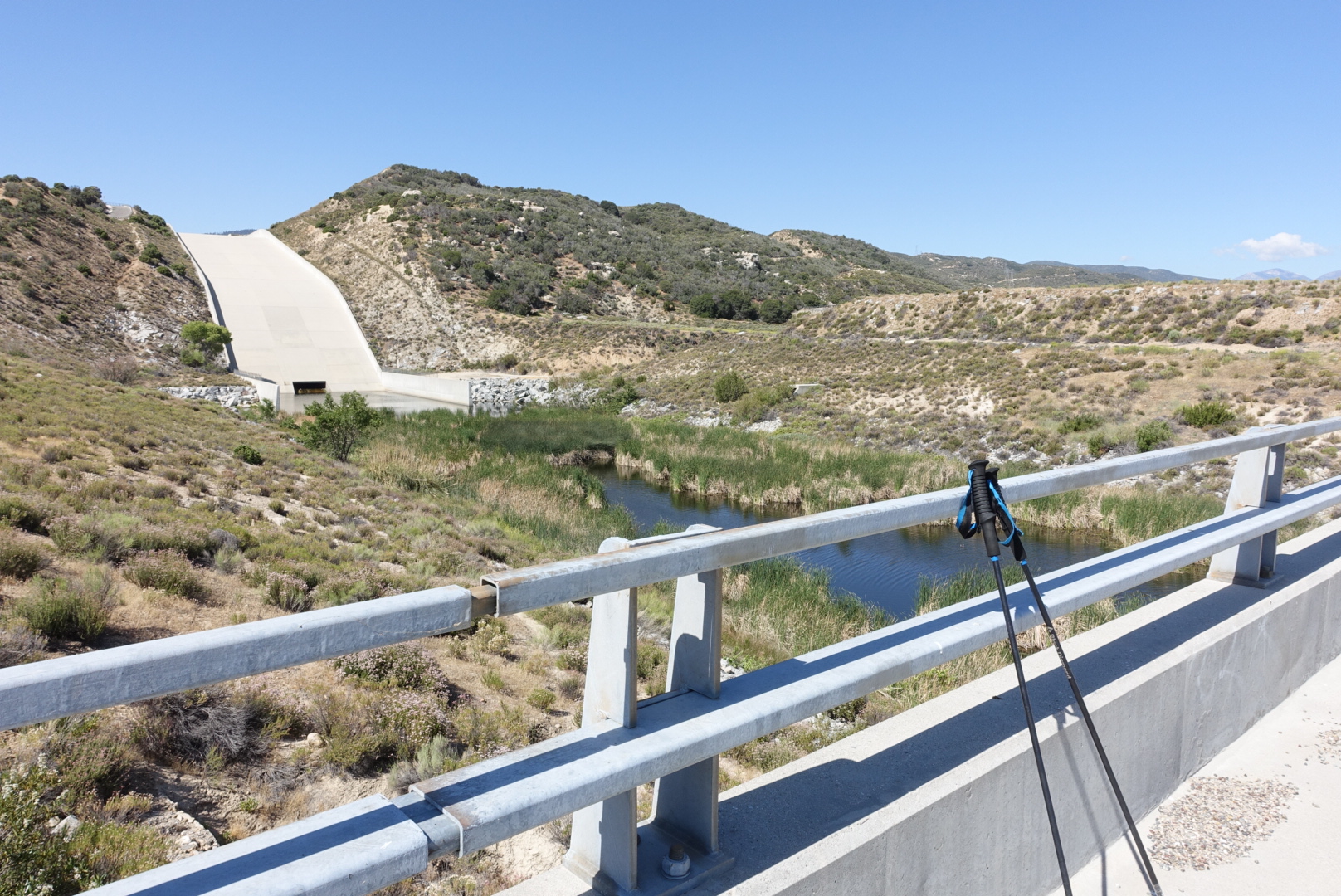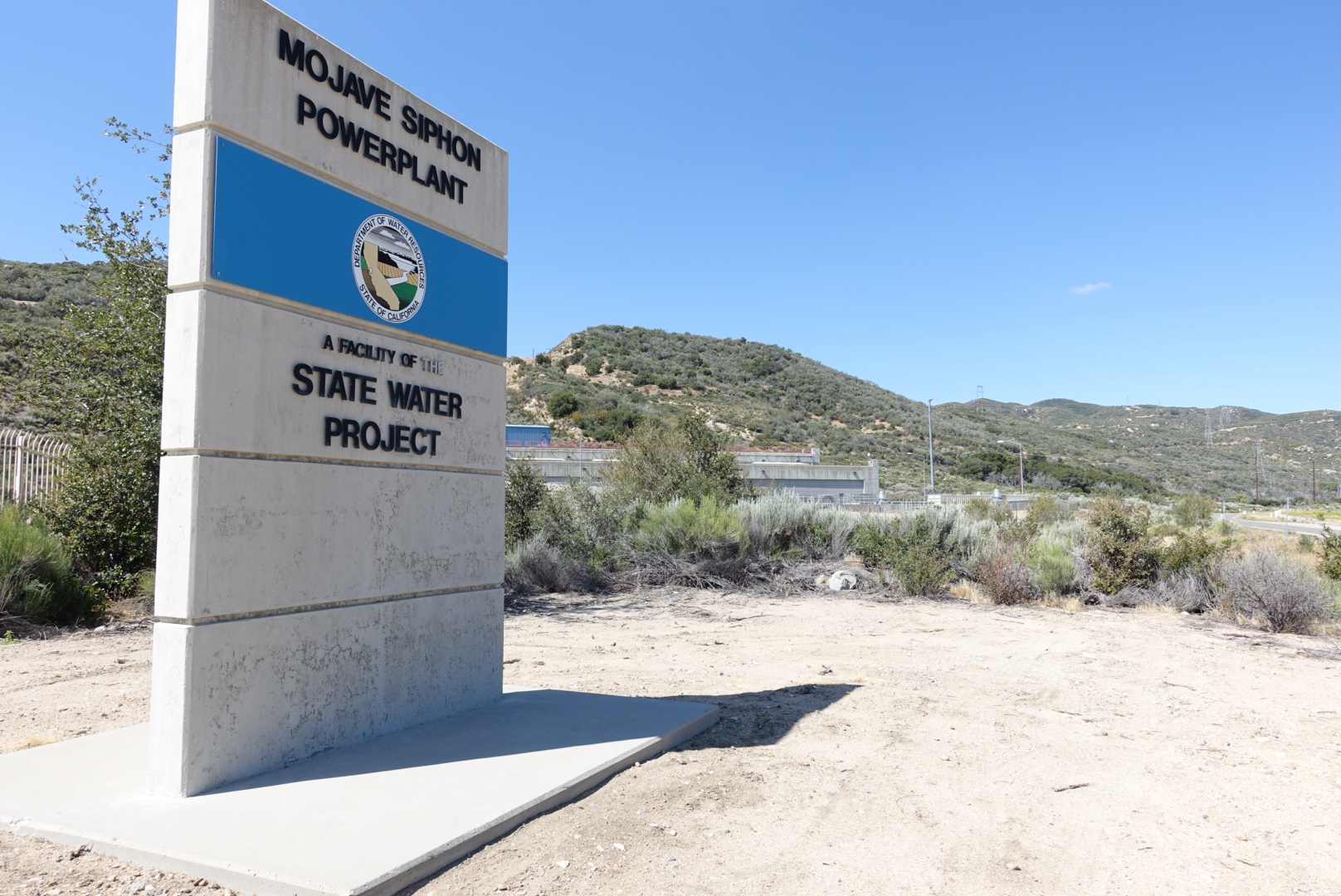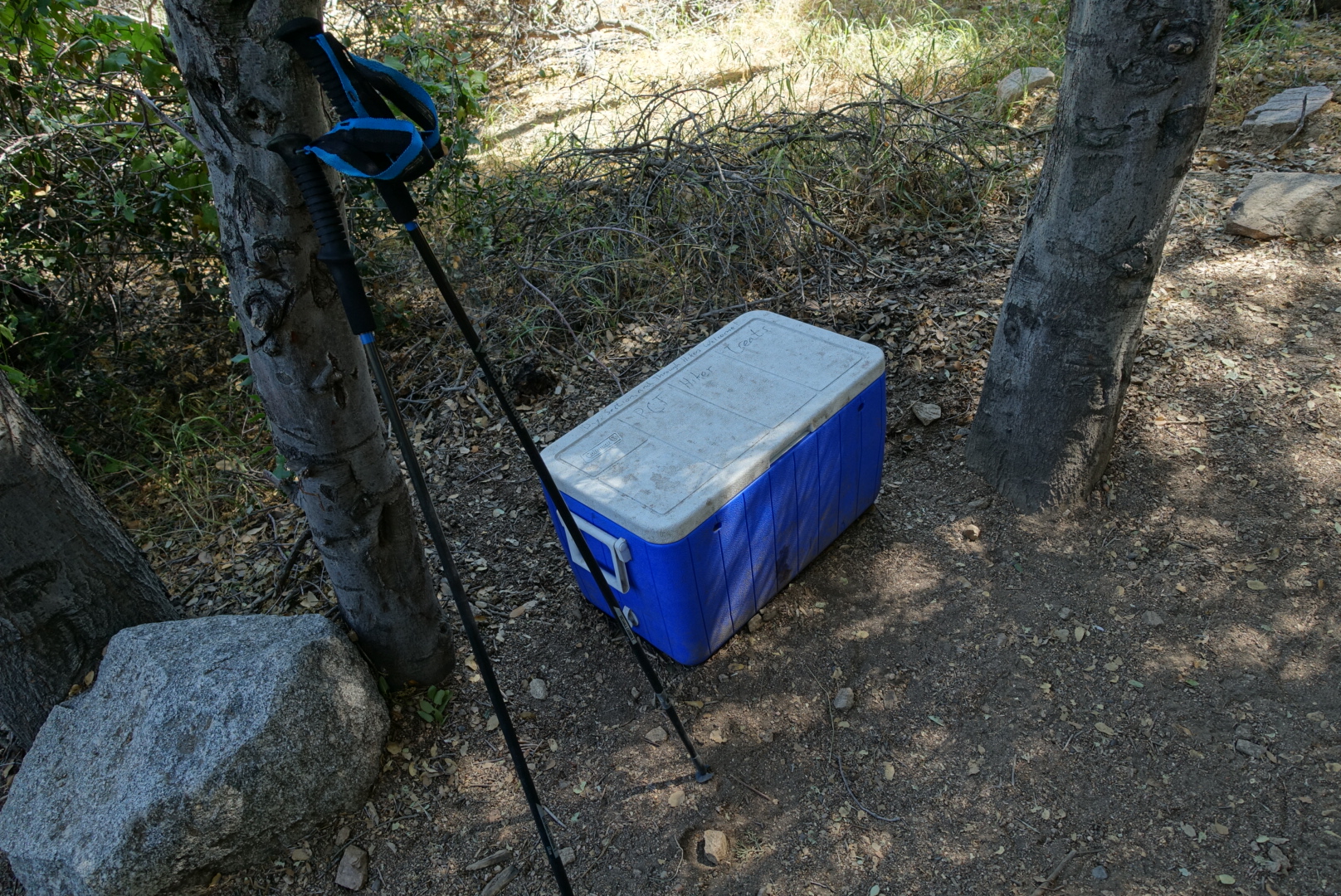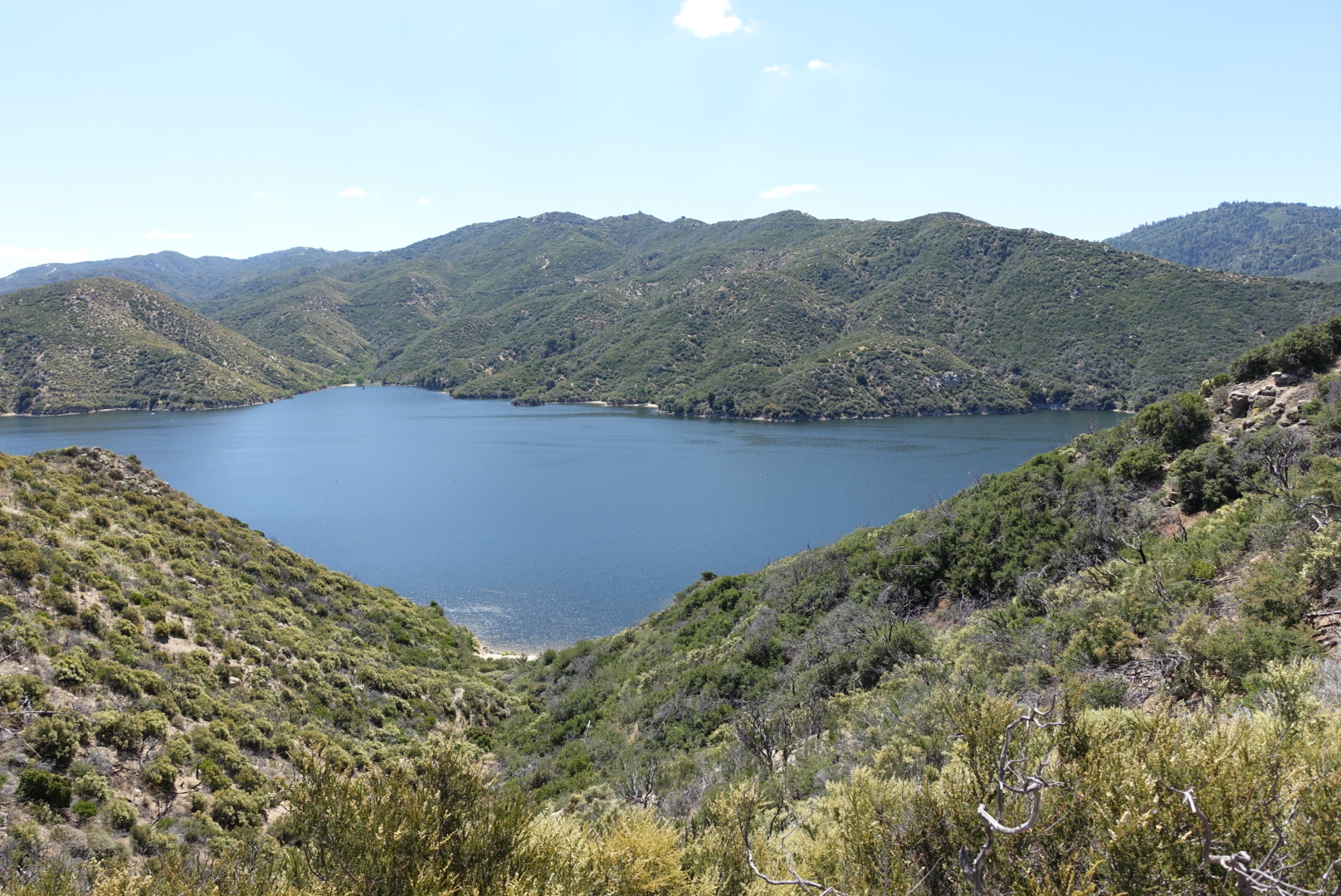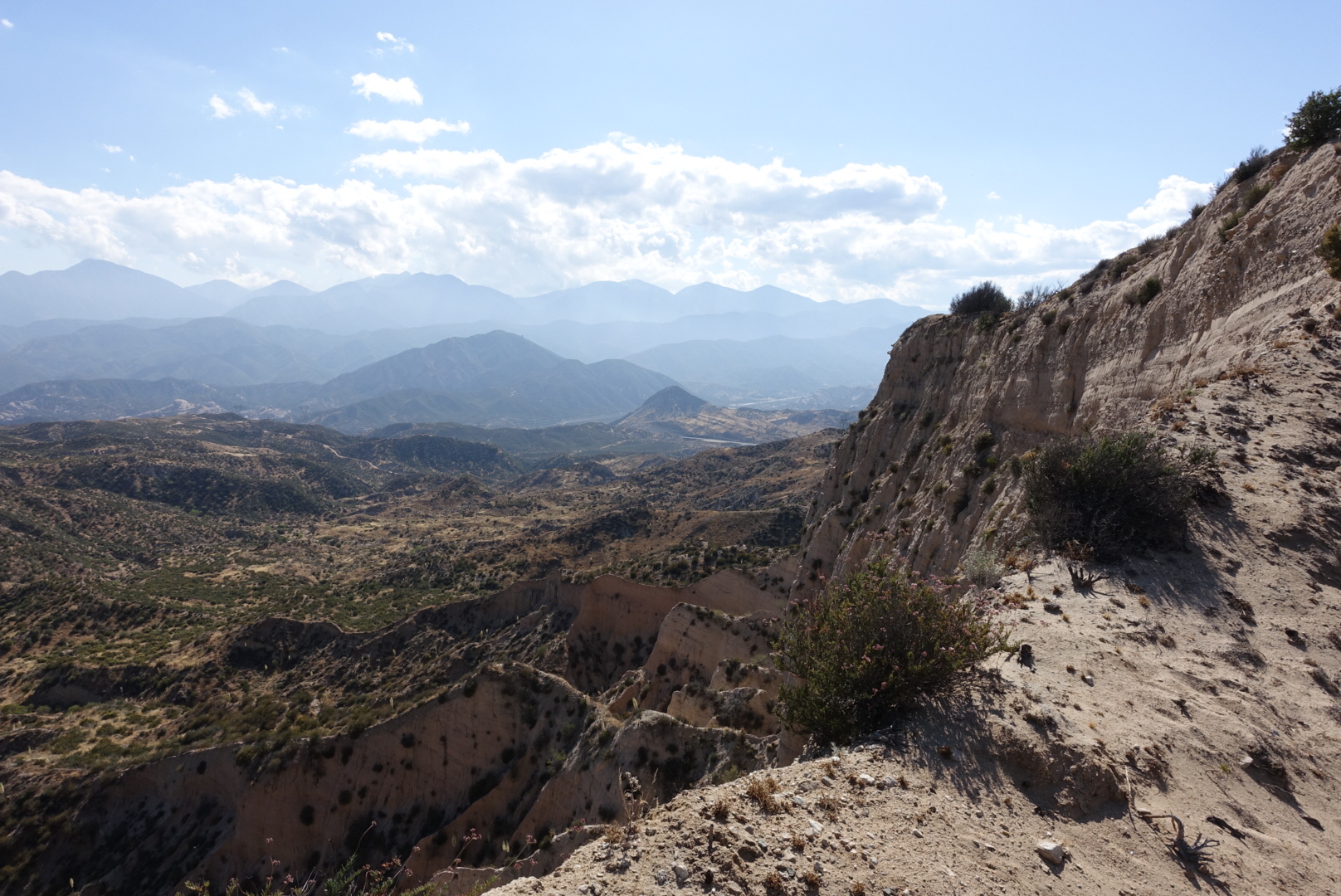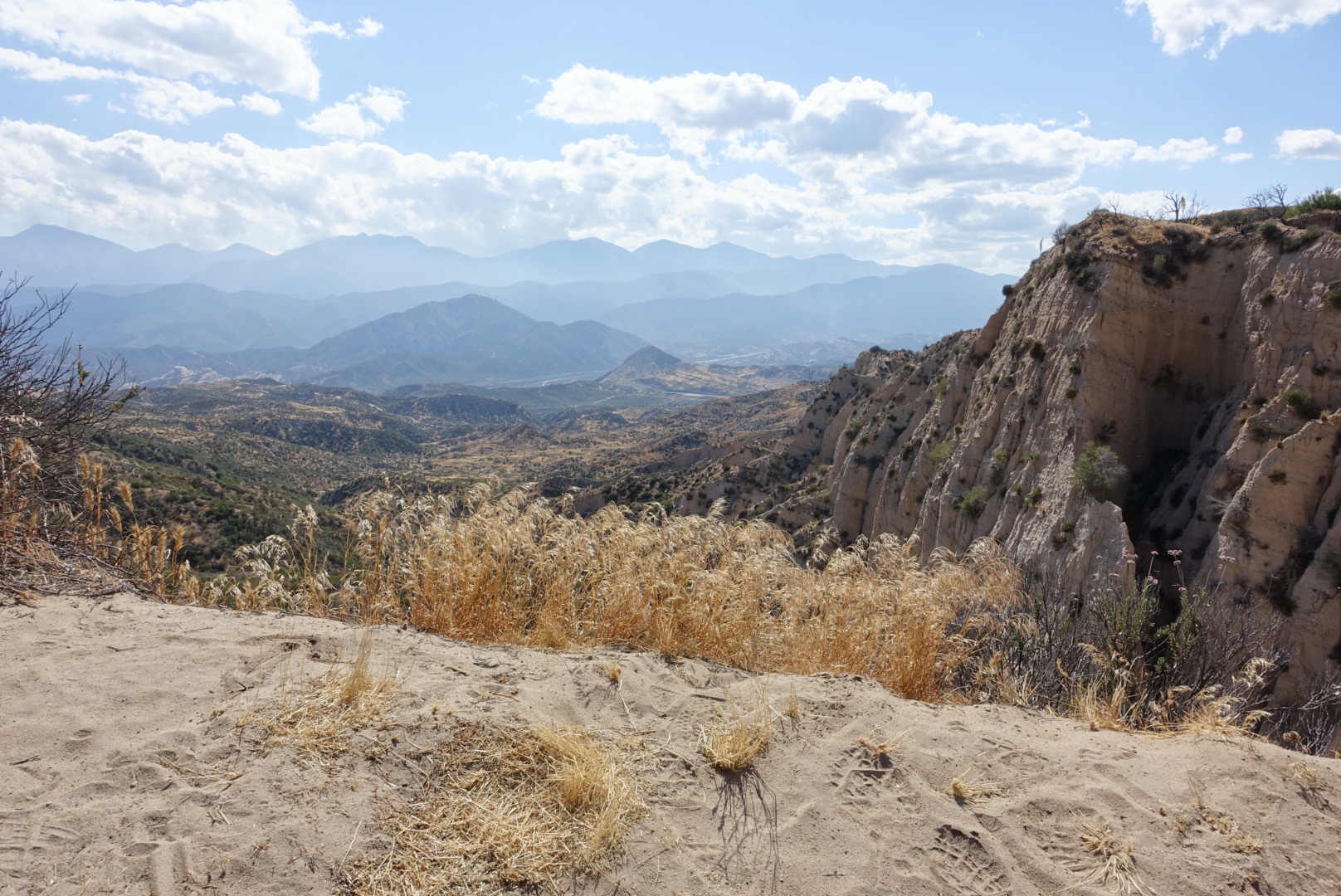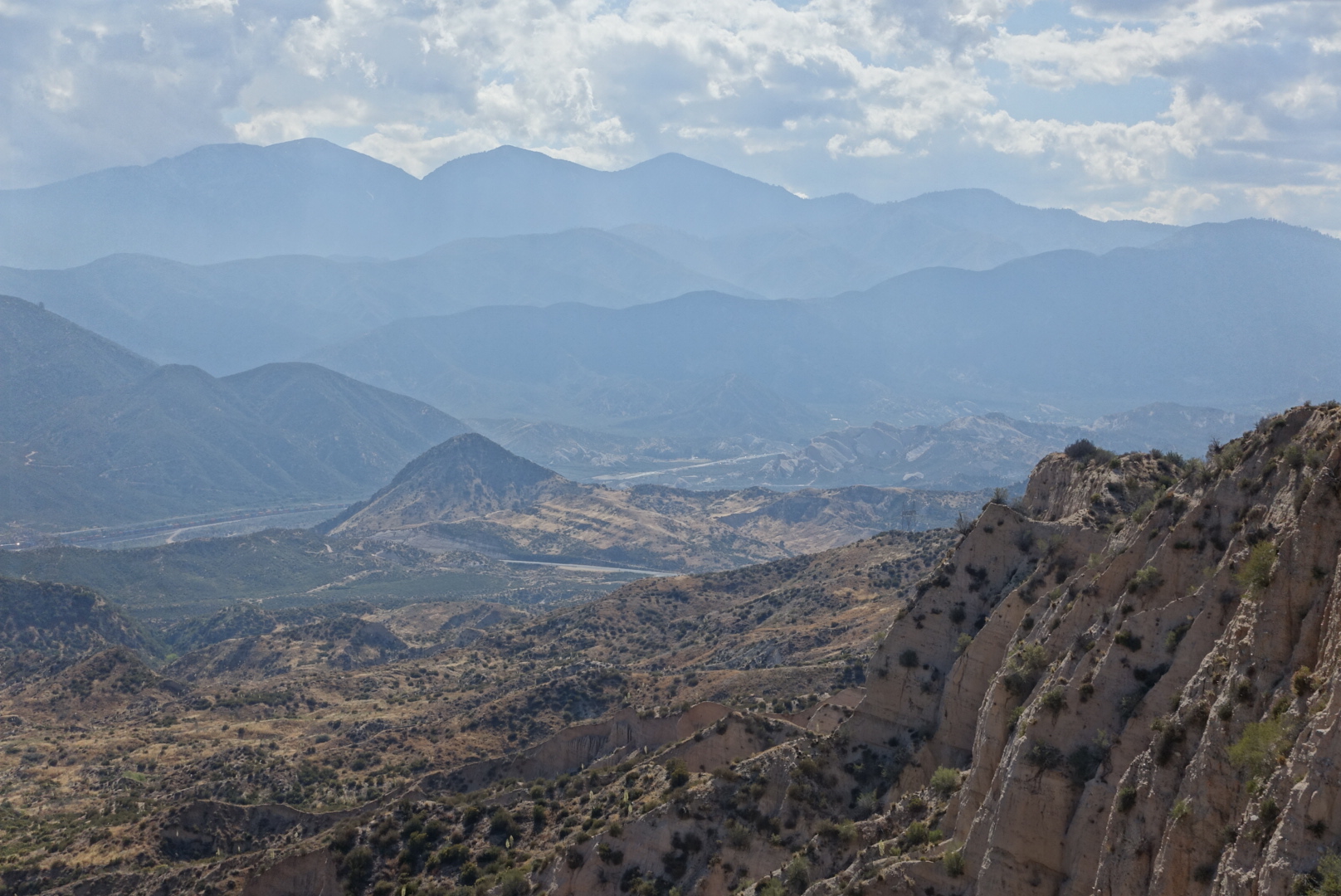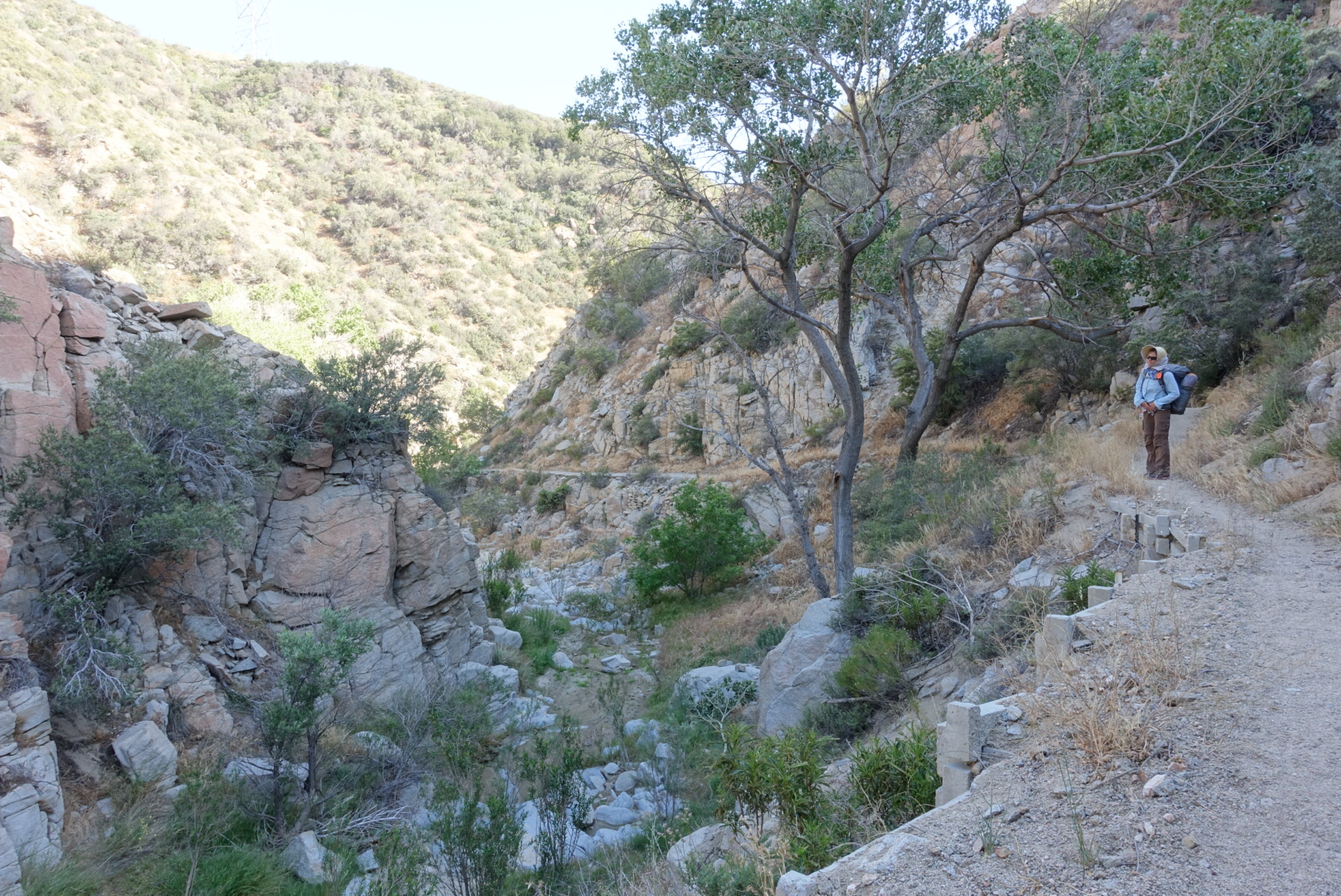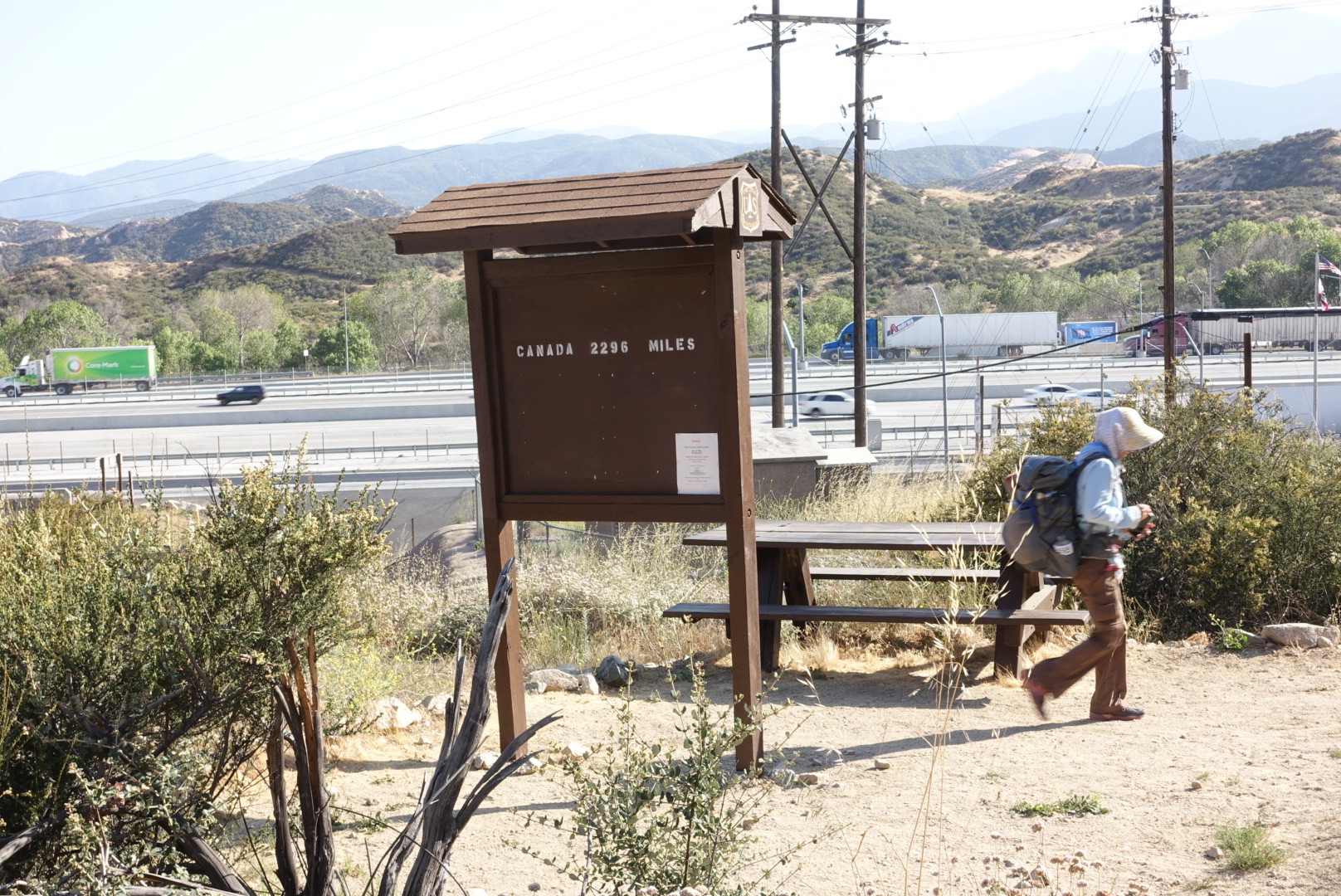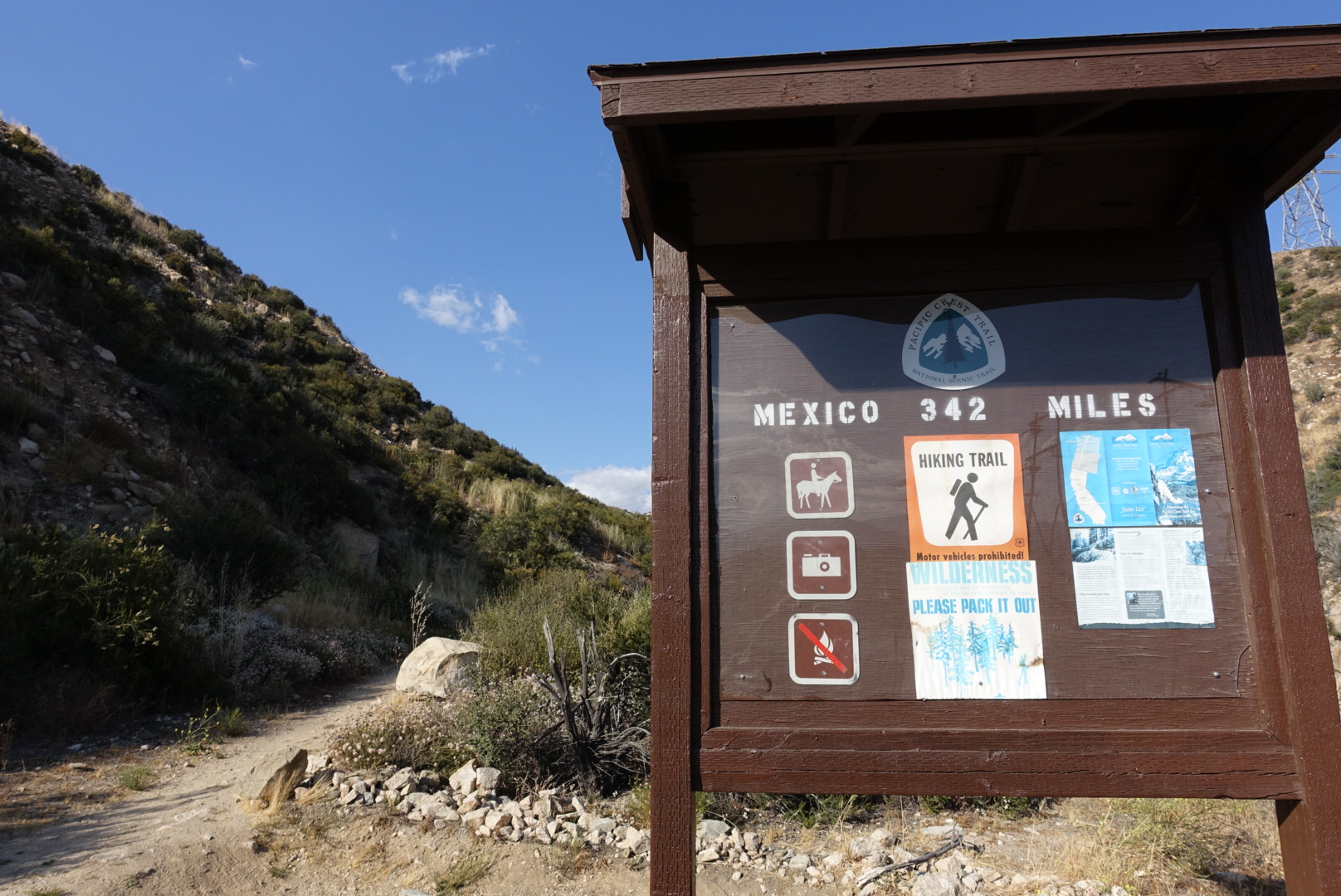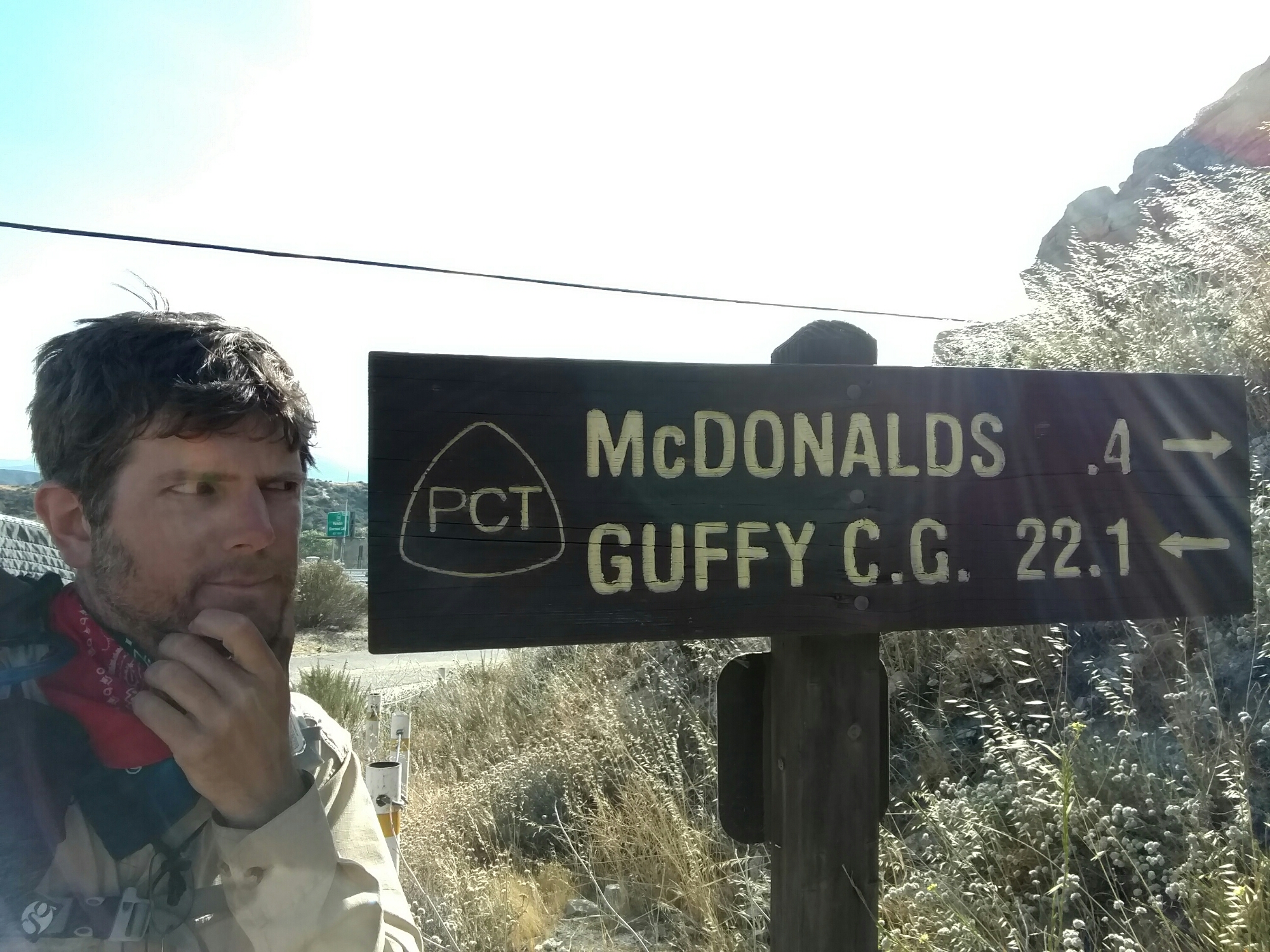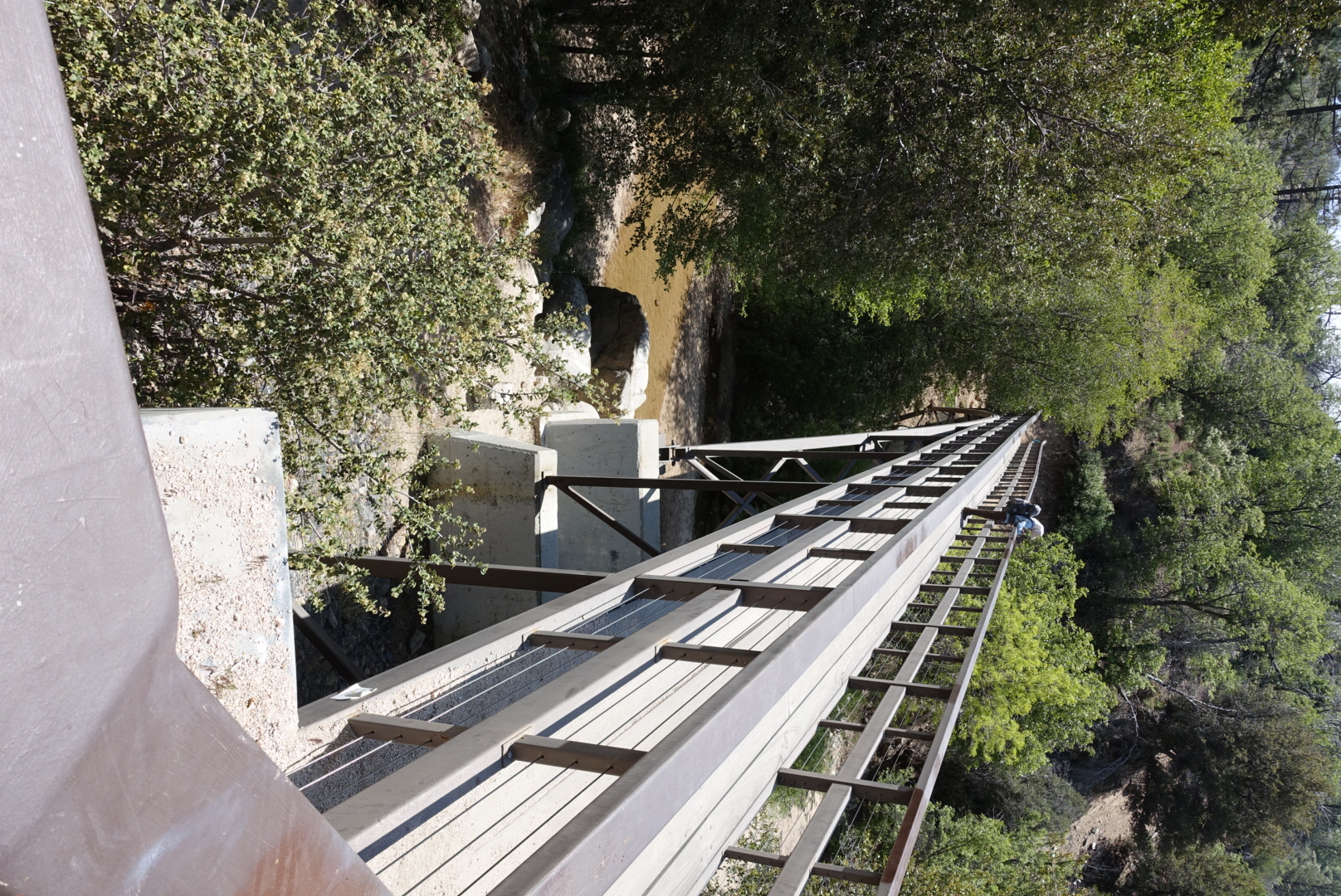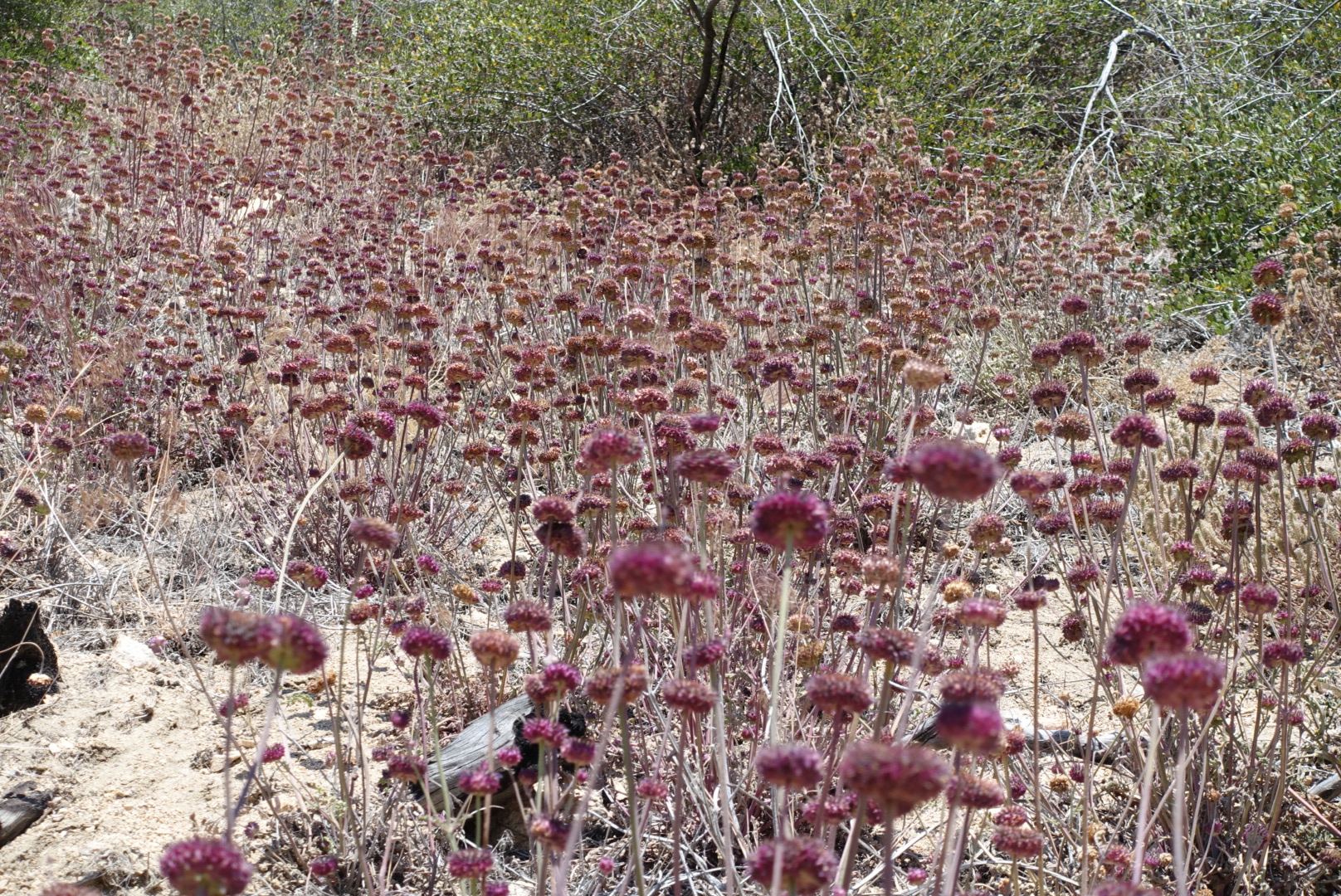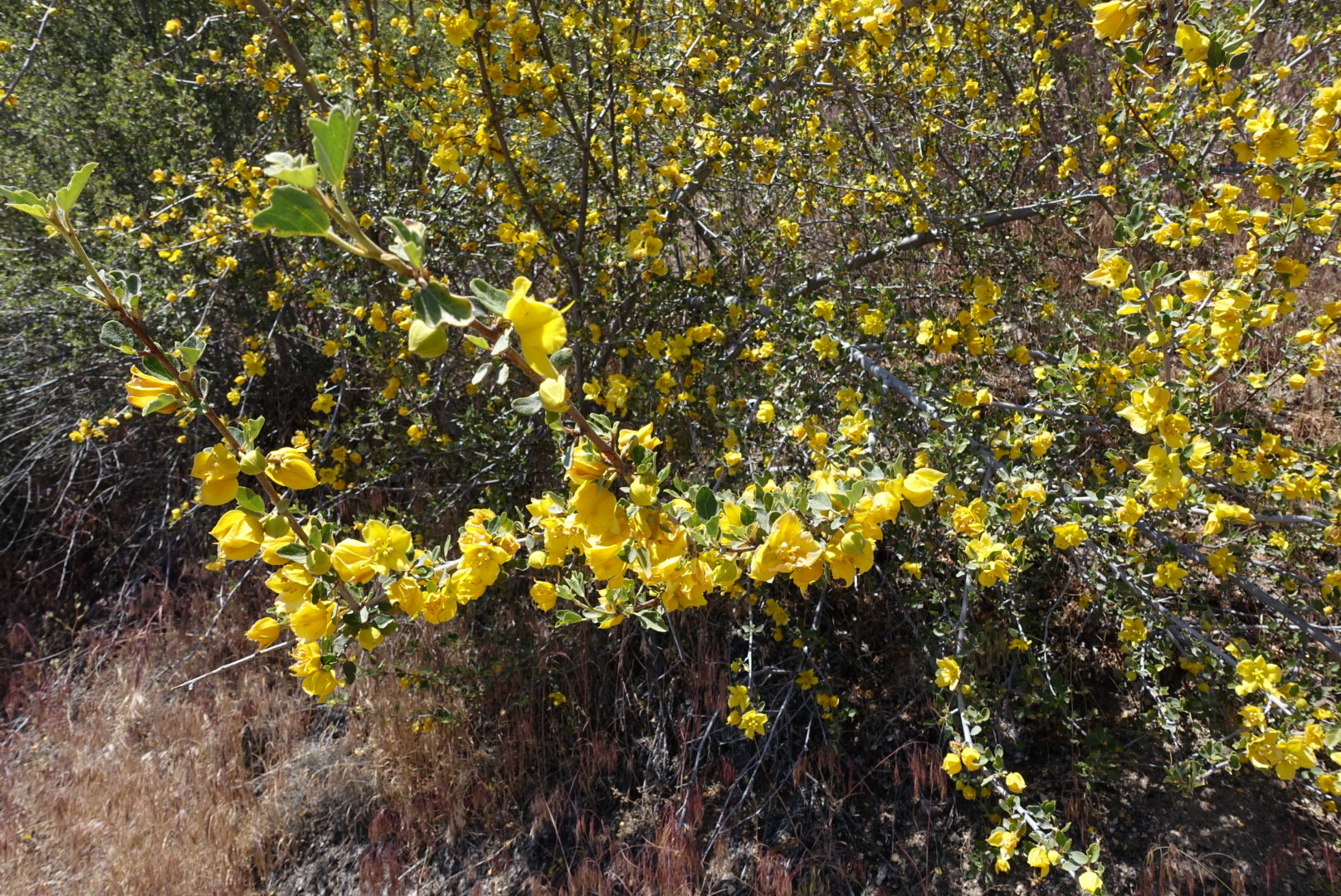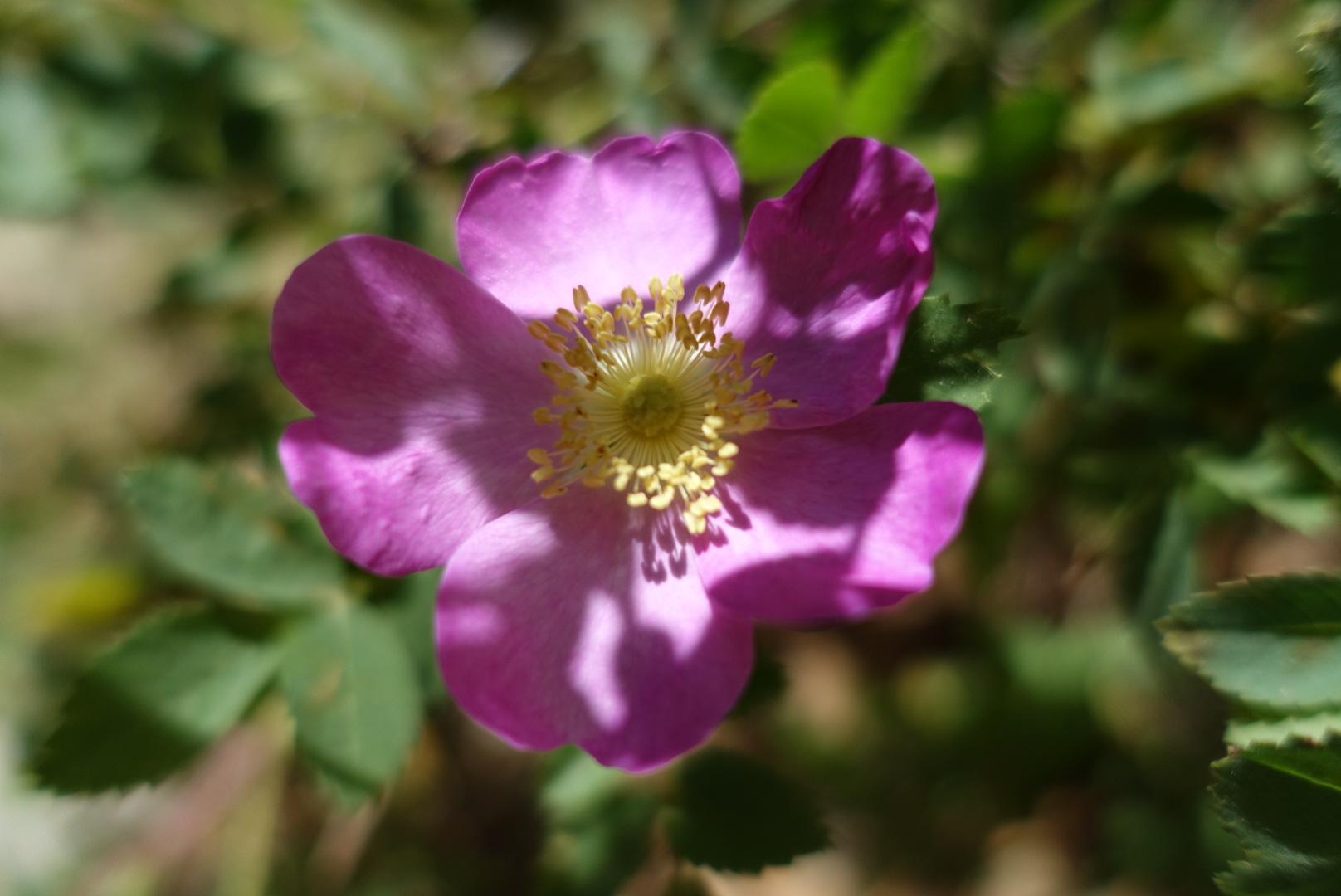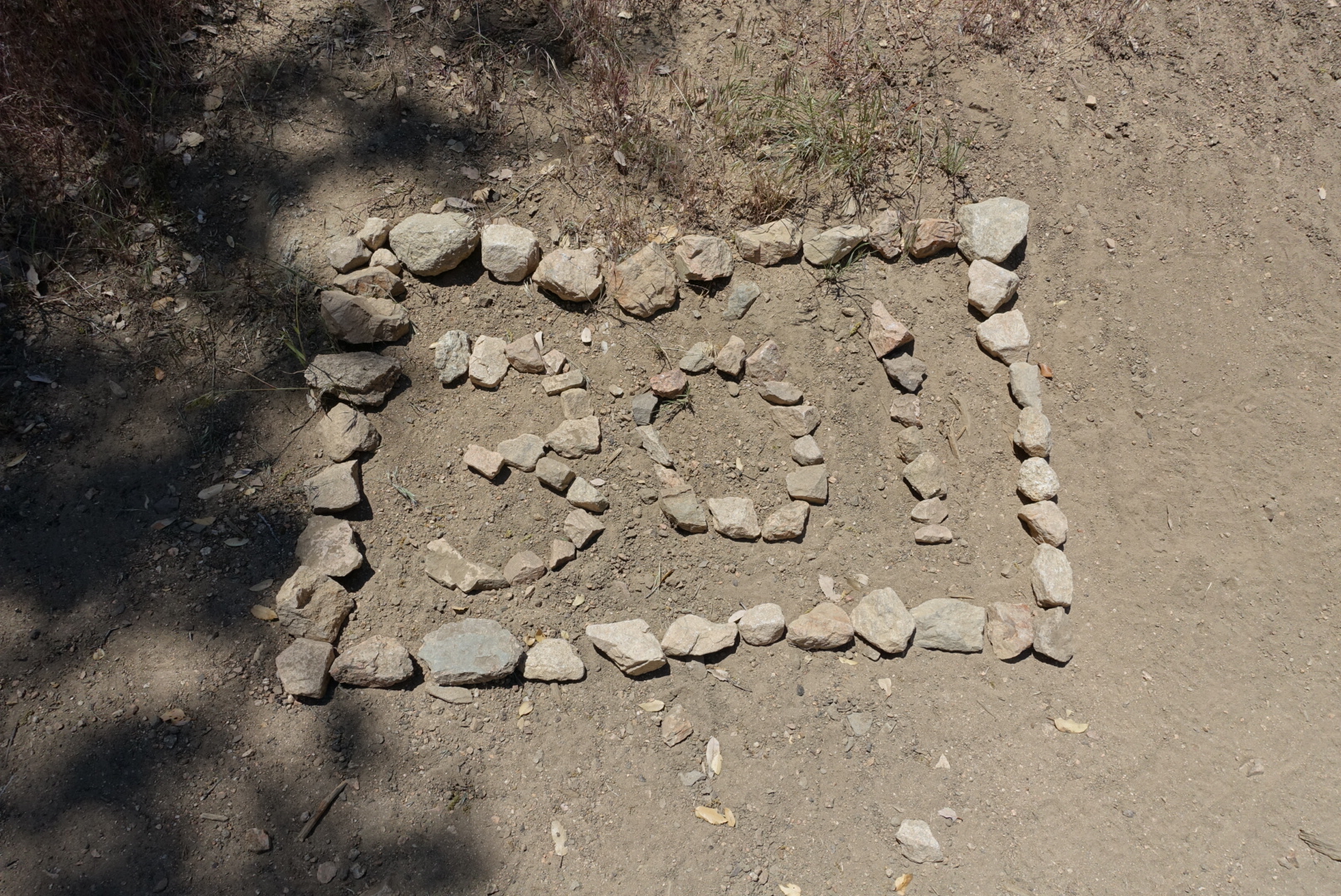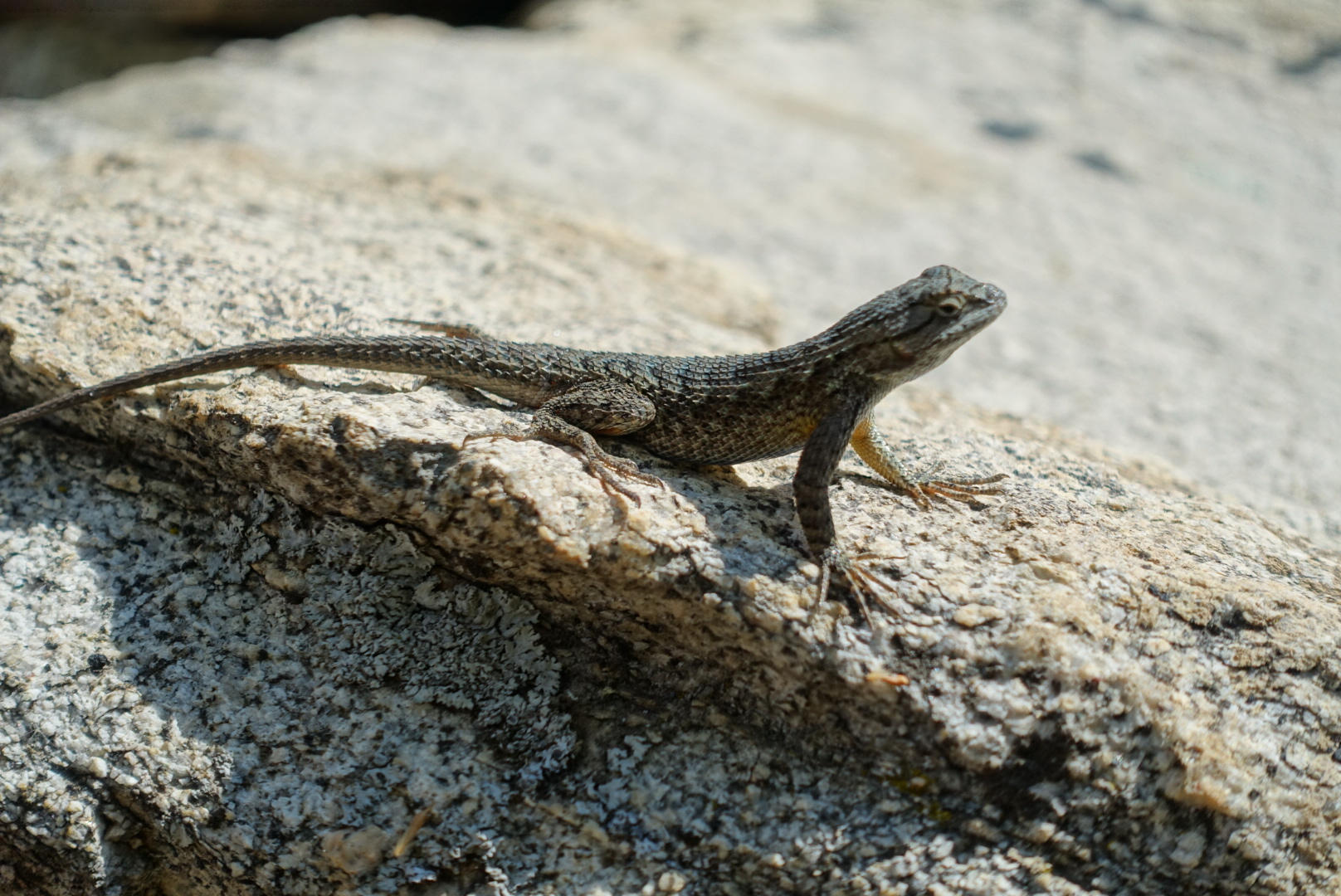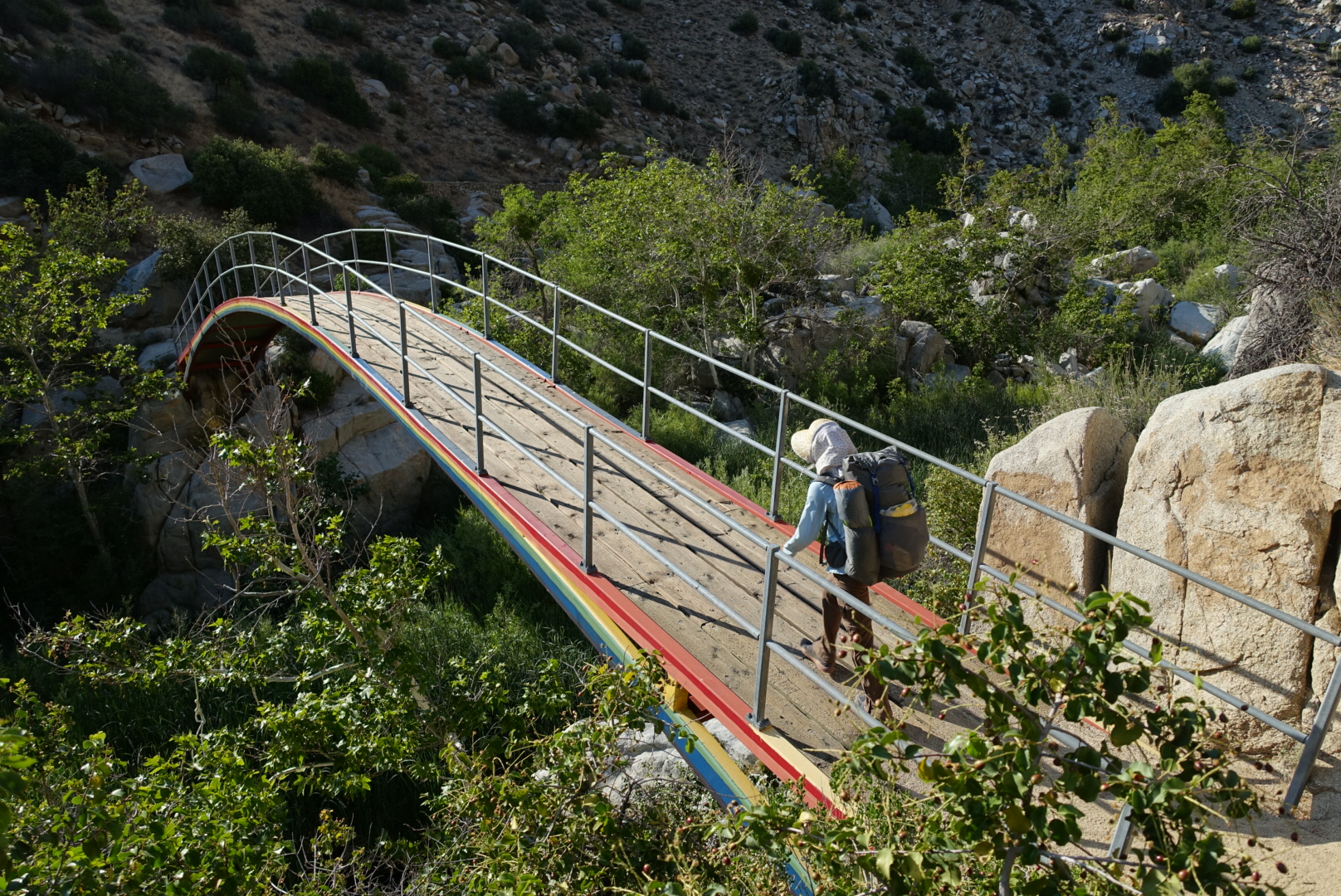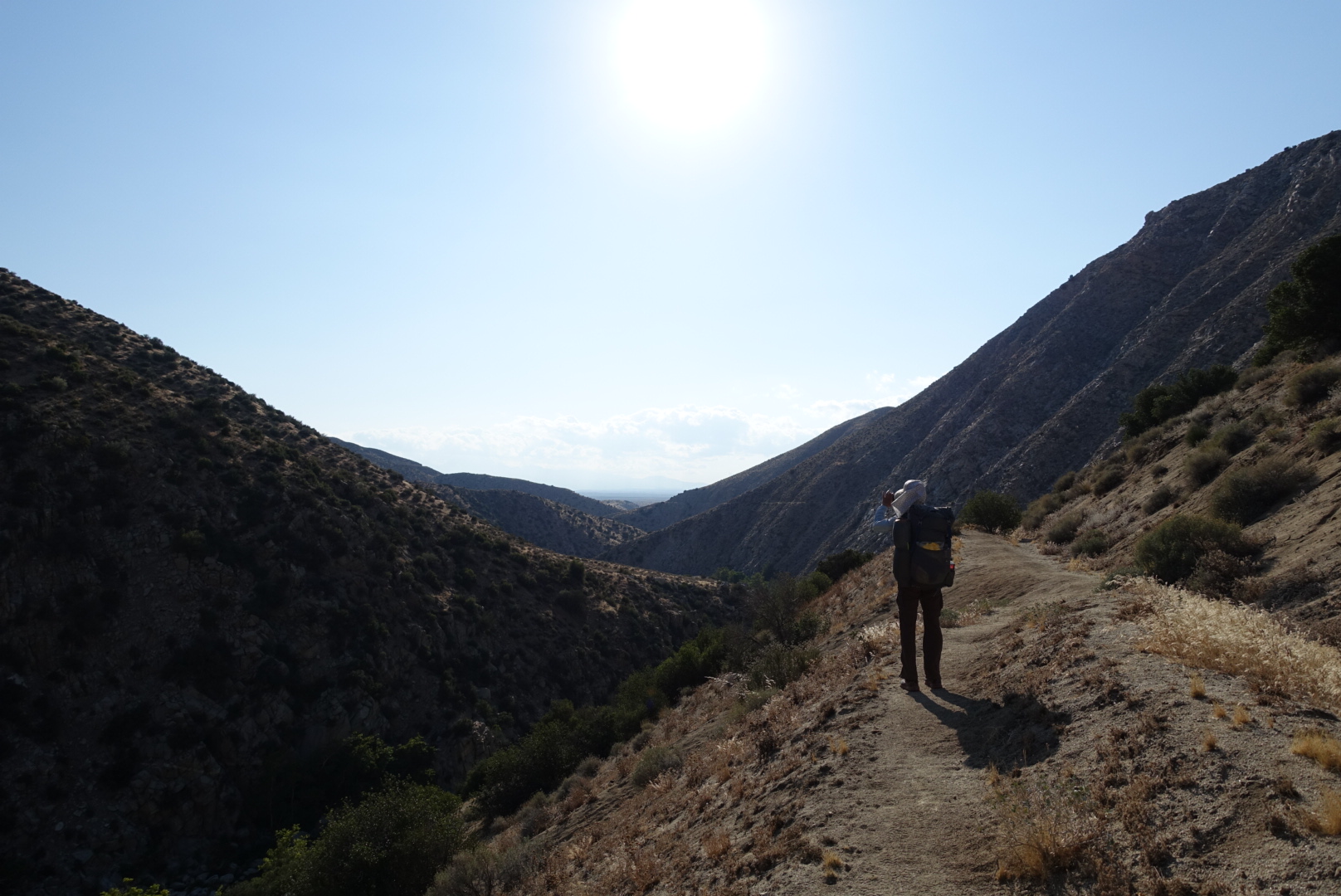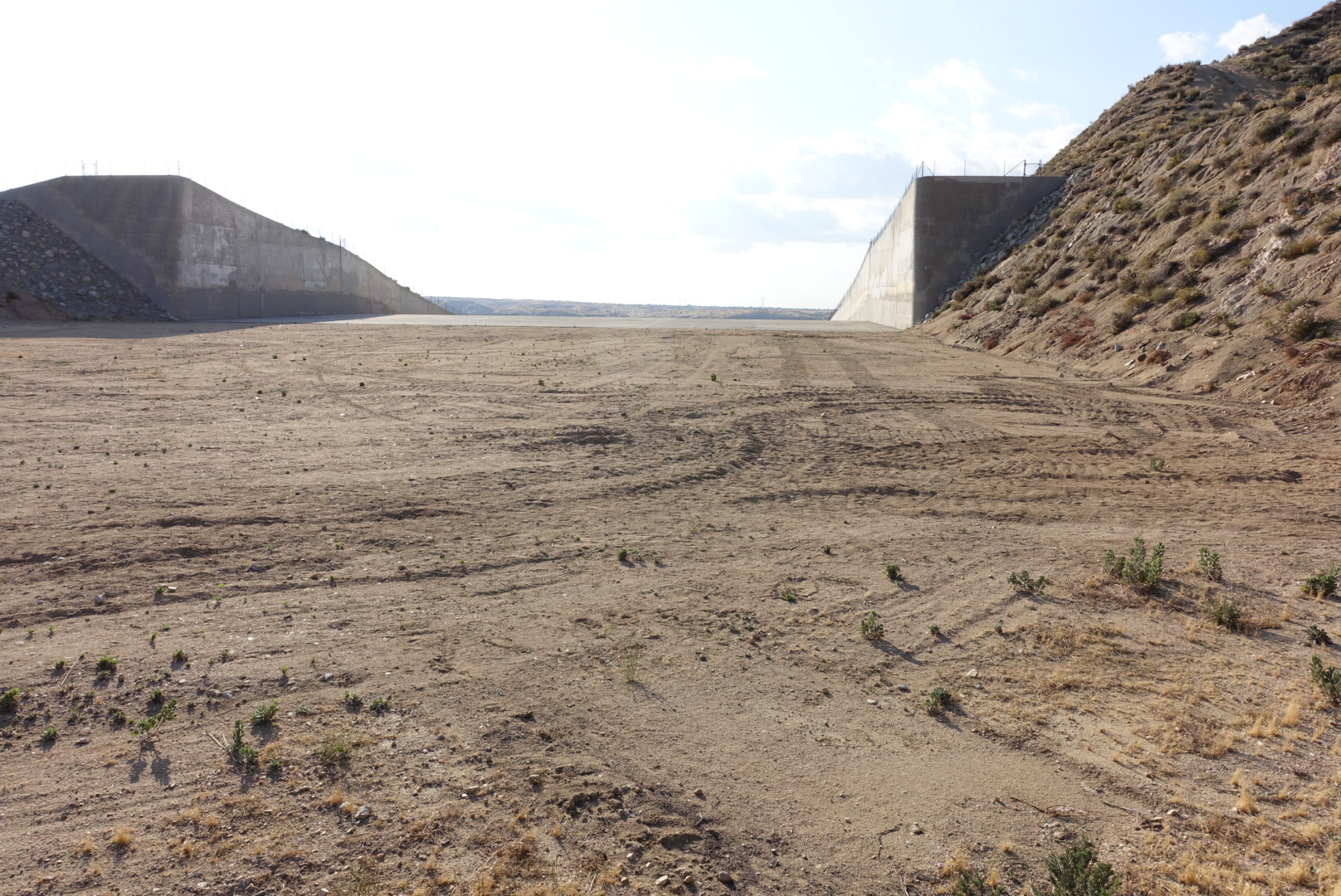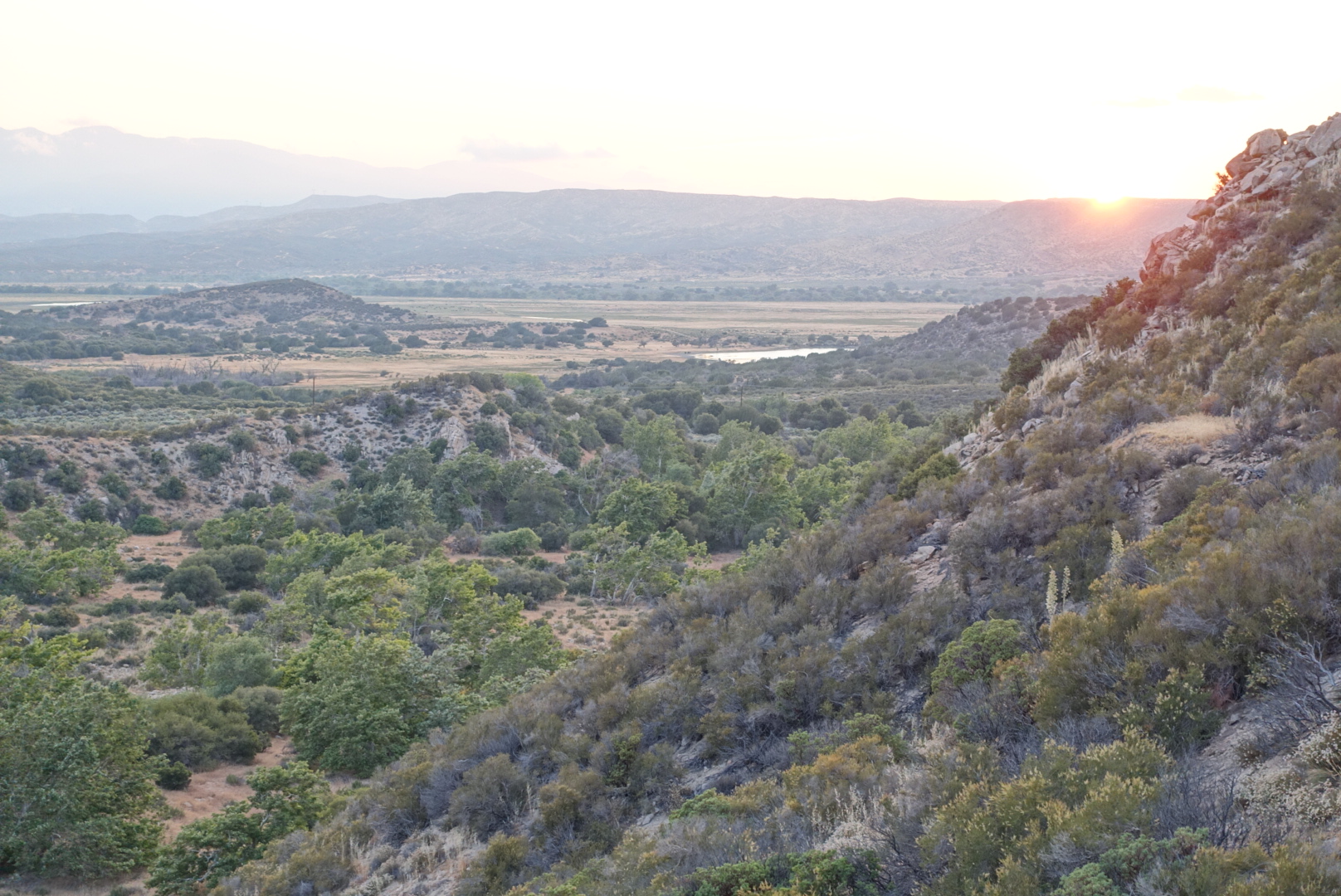The outlook for leaving Cajon Pass was not good. There were no places to get water for 29 miles, so we’d need to carry all our water for the day (and for camp tonight, and for tomorrow morning) from the outset. It was supposed to be hot, so that would be a lot of water. We’d be carrying that water up a 7200 foot climb, too.
We tried to buy or supplies for the morning, and discovered that the Cajon Pass gas stations were not good for this. There seemed to be no real food, just candy. The Del Taco attached to the Circle K was willing to sell us their packs of pain tortillas, but filling them would require creativity. I took 8 mayonnaise packets from the Chevron, hoping to make my tuna packets more palatable in a tortilla.
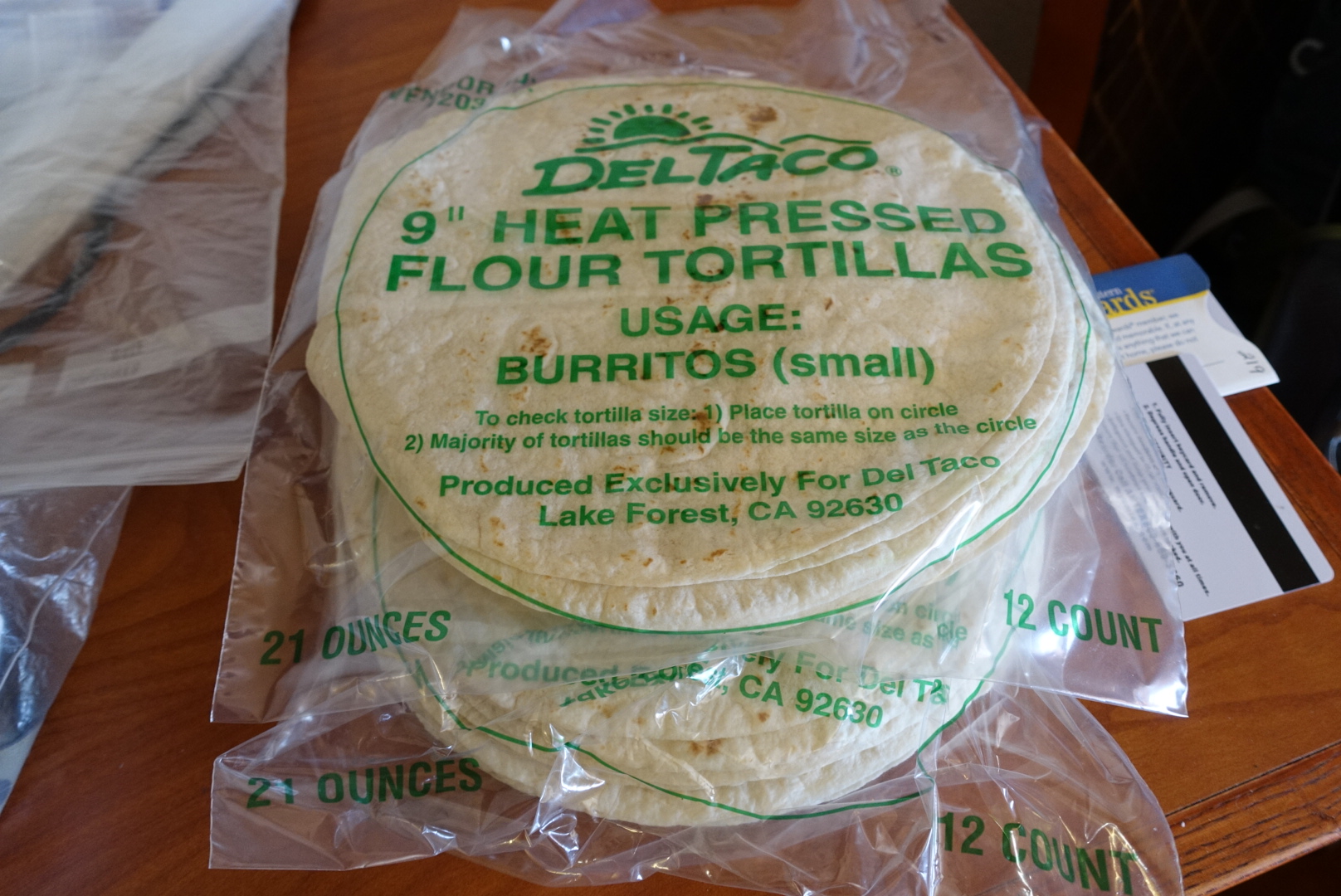
Before heading out I took some leftover odds and ends to the hiker box, including the leftover bottles of beer. It was good beer, too – Lagunitas Lil’ Sumpin’. That would surely be a nice surprise for some hiker.
Getting all those tasks done in the morning, however, meant that we didn’t start hiking until 10AM. It had already gotten hot.
The very beginning of the day, at least, was easy. We passed under the freeway and crossed under and over railways.
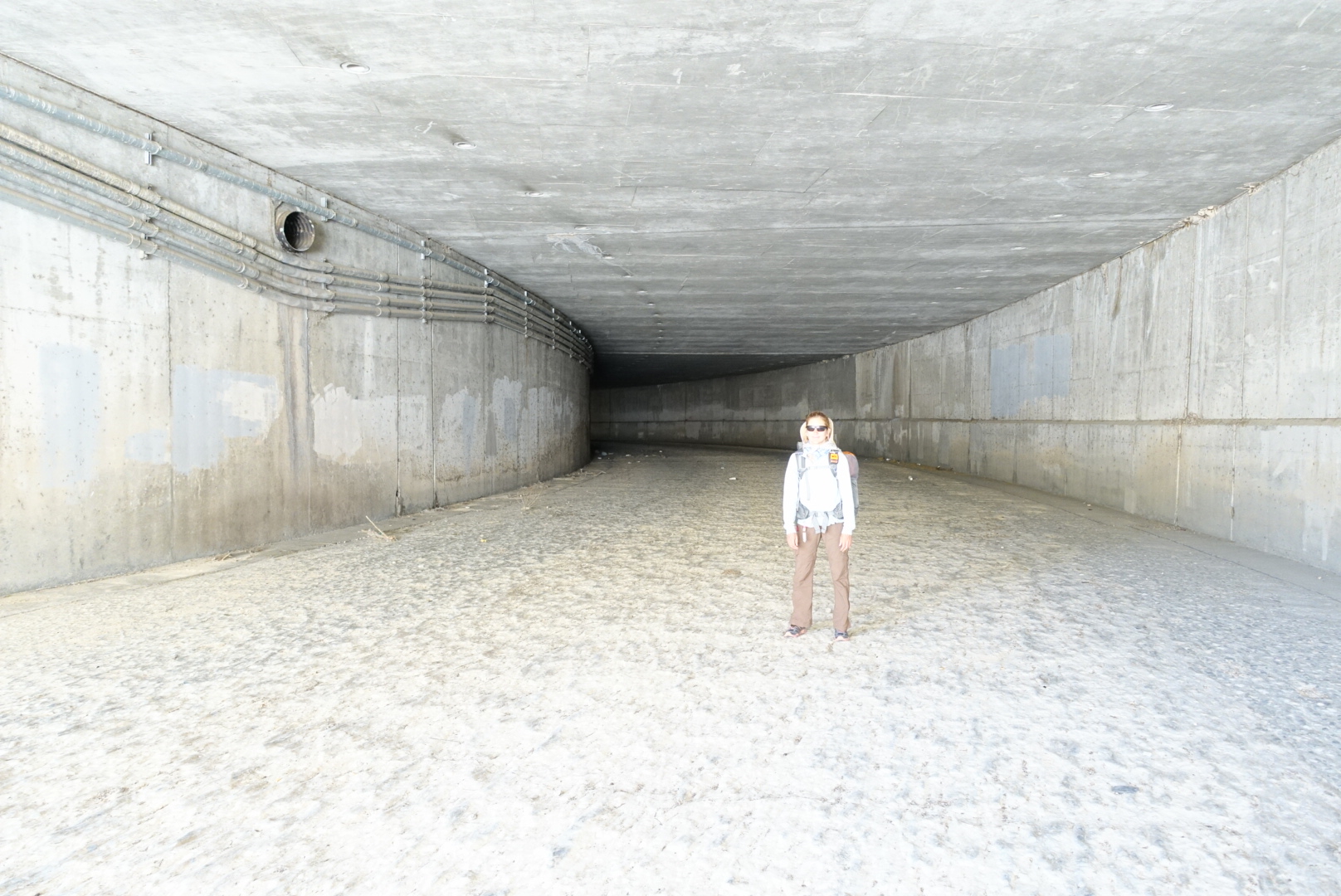
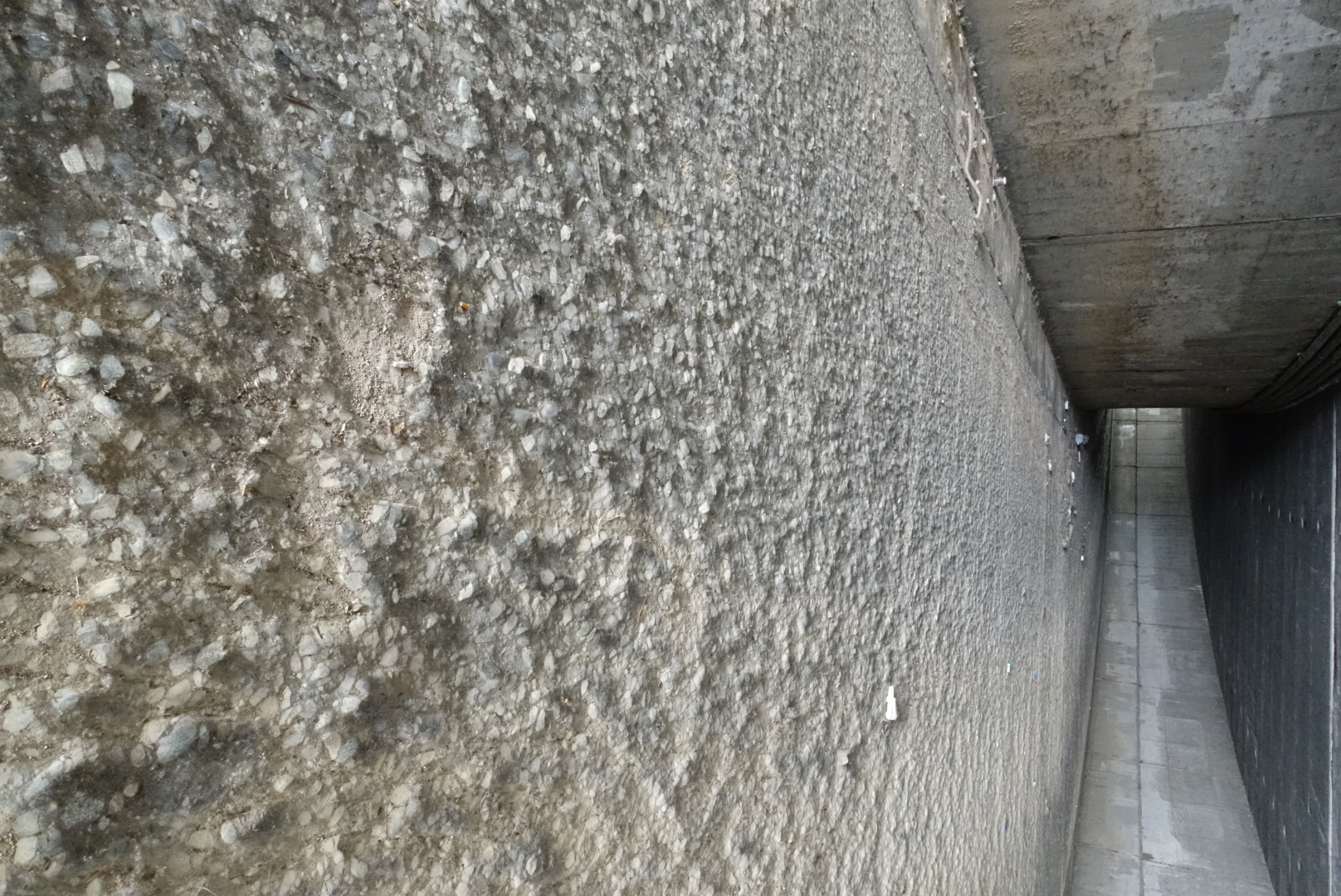
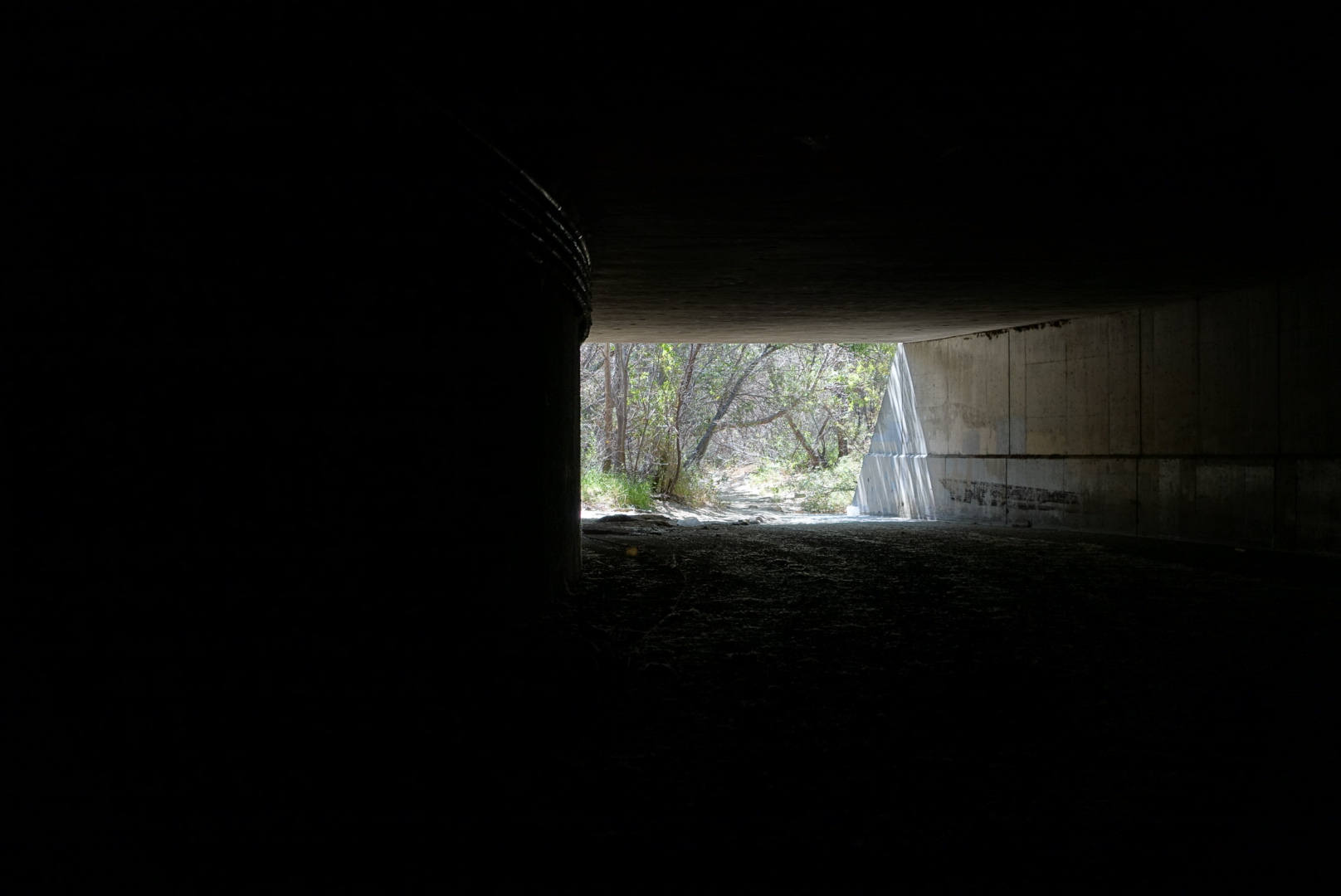
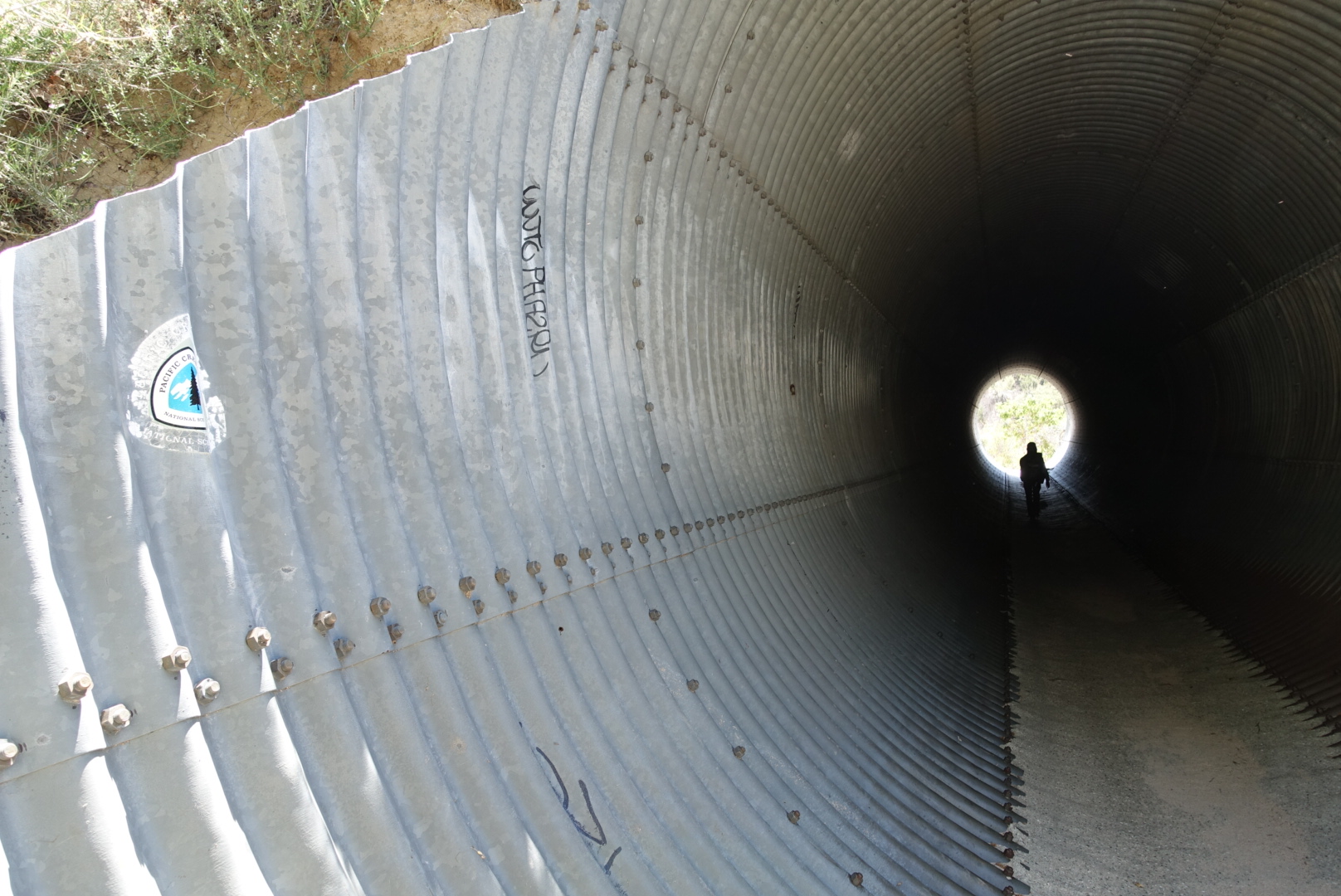
After passing through the tunnels, we pushed through a dense field, and I caught my first whiff of something that would plague me for many miles – poodle dog. Let me explain:
The PCT in certain sections of southern California is plagued by something called poodle dog. It smells strongly of skunk, and can grow up to 9 feet tall. It’s covered with a short fuzzy hair that looks gooey and sticky. If you touch it, you’ll get a rash worse than poison oak.
Despite the smell, I couldn’t find it. I wasn’t quite clear on what it looked like, either – I’d only seen blurry pictures, and vague descriptions. So we trudged on, cautious.
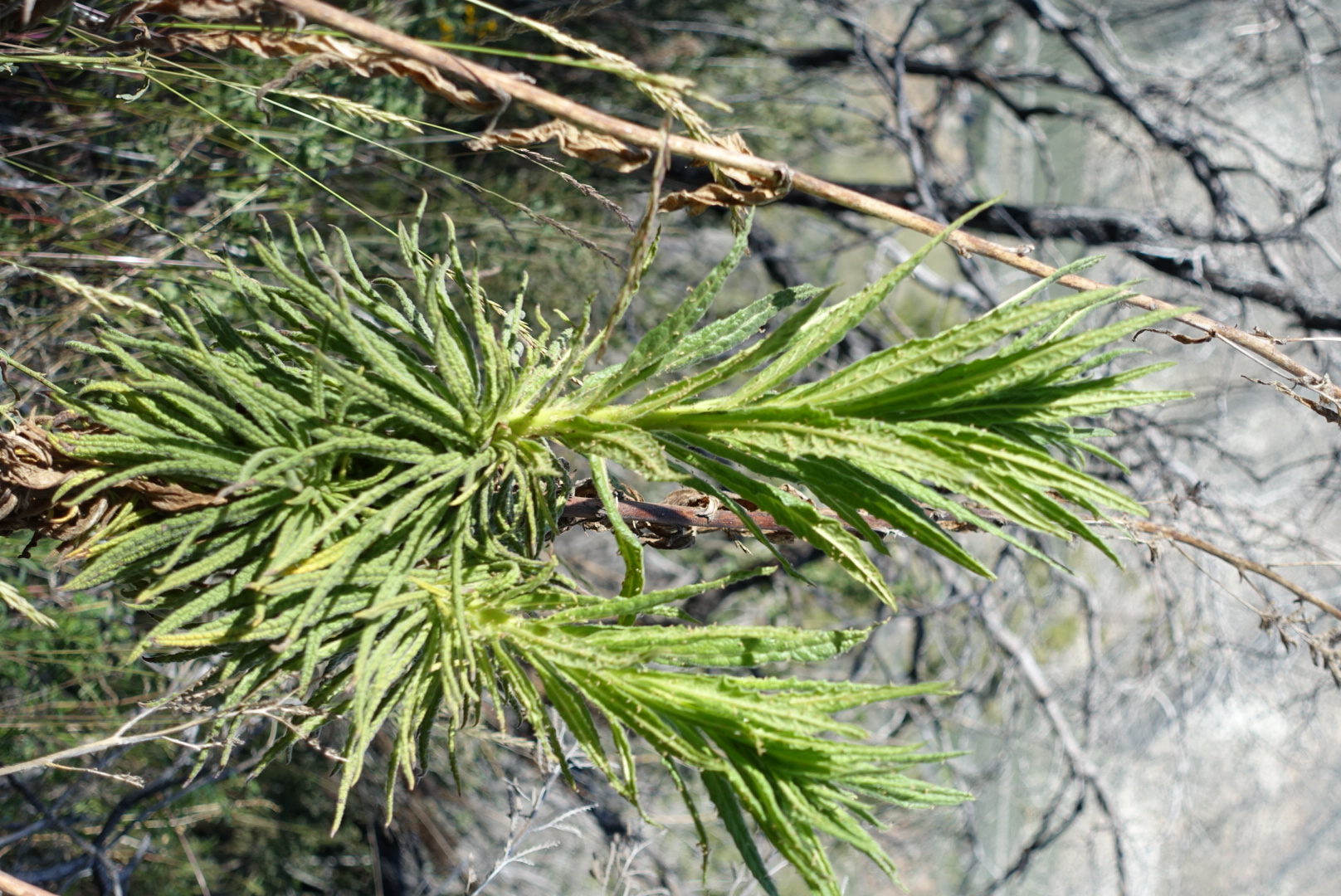
The PCT water report had told us about a 29 mile dry stretch, so we were loaded down heavily with water. Our pack weight made uphill climbs painful.
So when we saw a great big water cache 7 miles in, it was a bit disheartening.
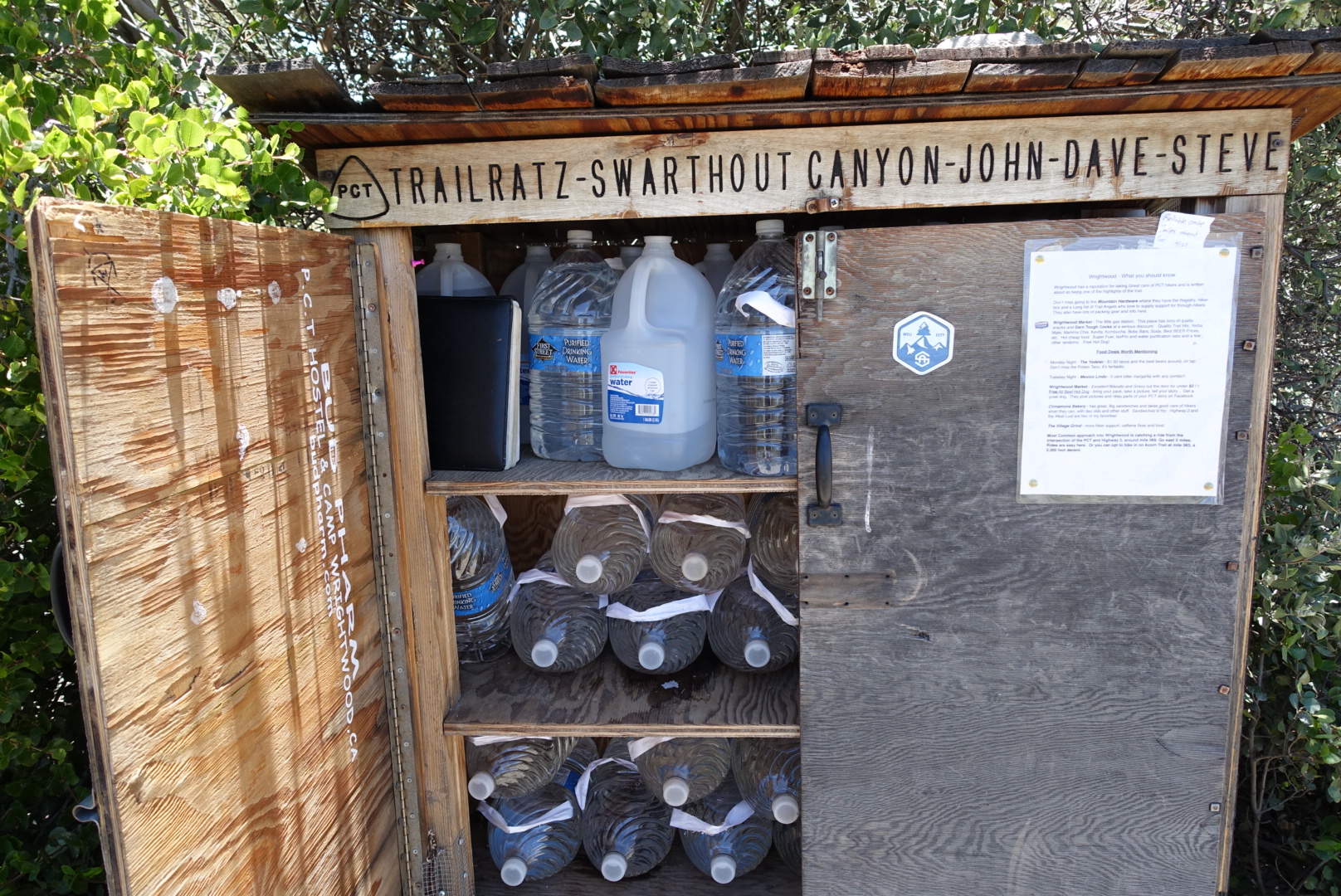
We ran into Bill and Wonky on the way up the hill. They were sheltered in a patch of shade, drying some gear in the sun, and having lunch. We griped about the Cajon Pass resupply choices, and traded them some Pop Tarts for some cheese.
We also meet a middle-aged Japanese couple who we’d seen at the Best Western. They couldn’t speak much English, but the husband managed to say “Thank you for beer. Very good beer.”
The way up the hill had some good views back to Cajon Pass, and the surrounding terrain.
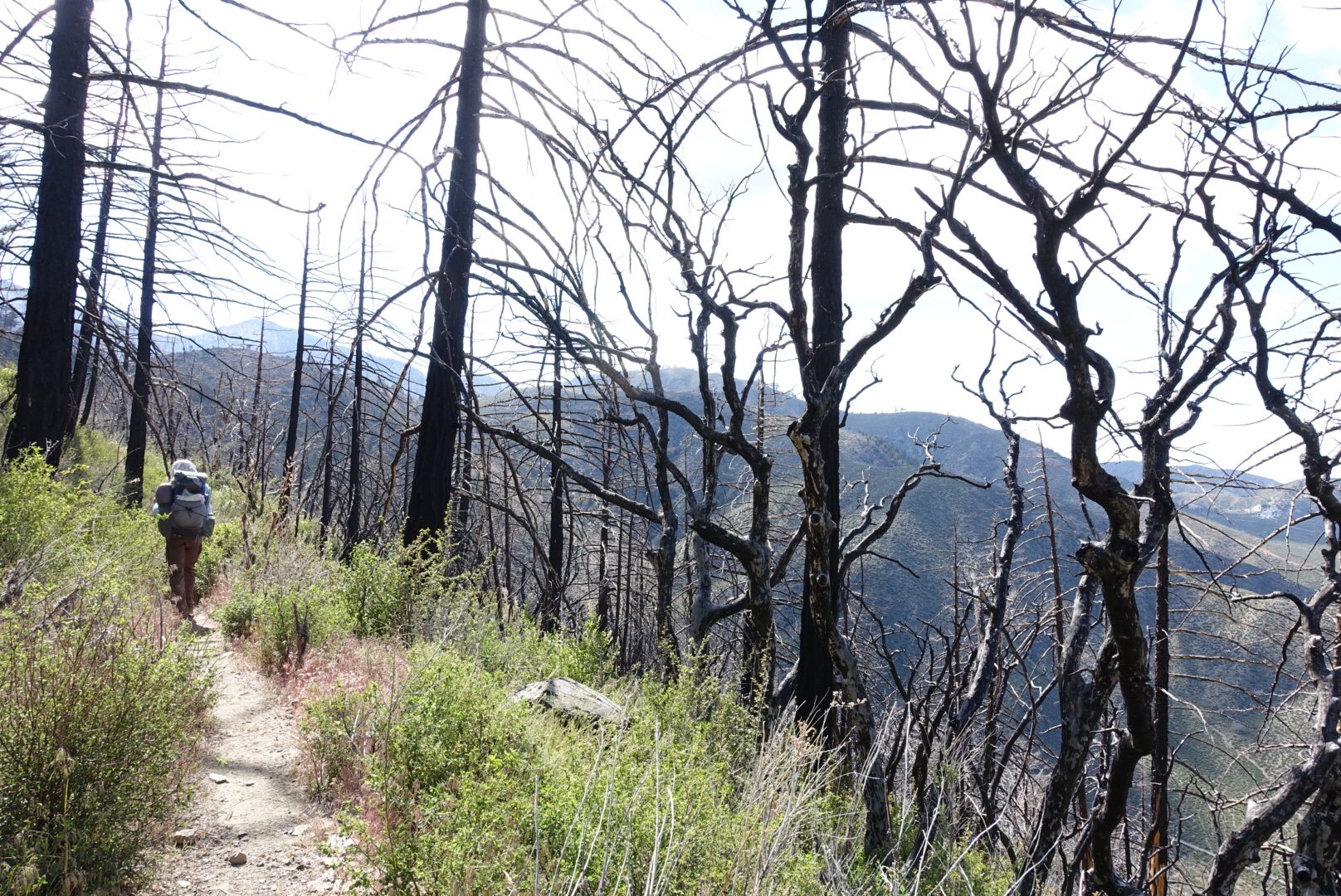
At the top of the hill, we found a campsite with terrific views to the valley to the north, full of farms and, later, the lights off small towns and highways.
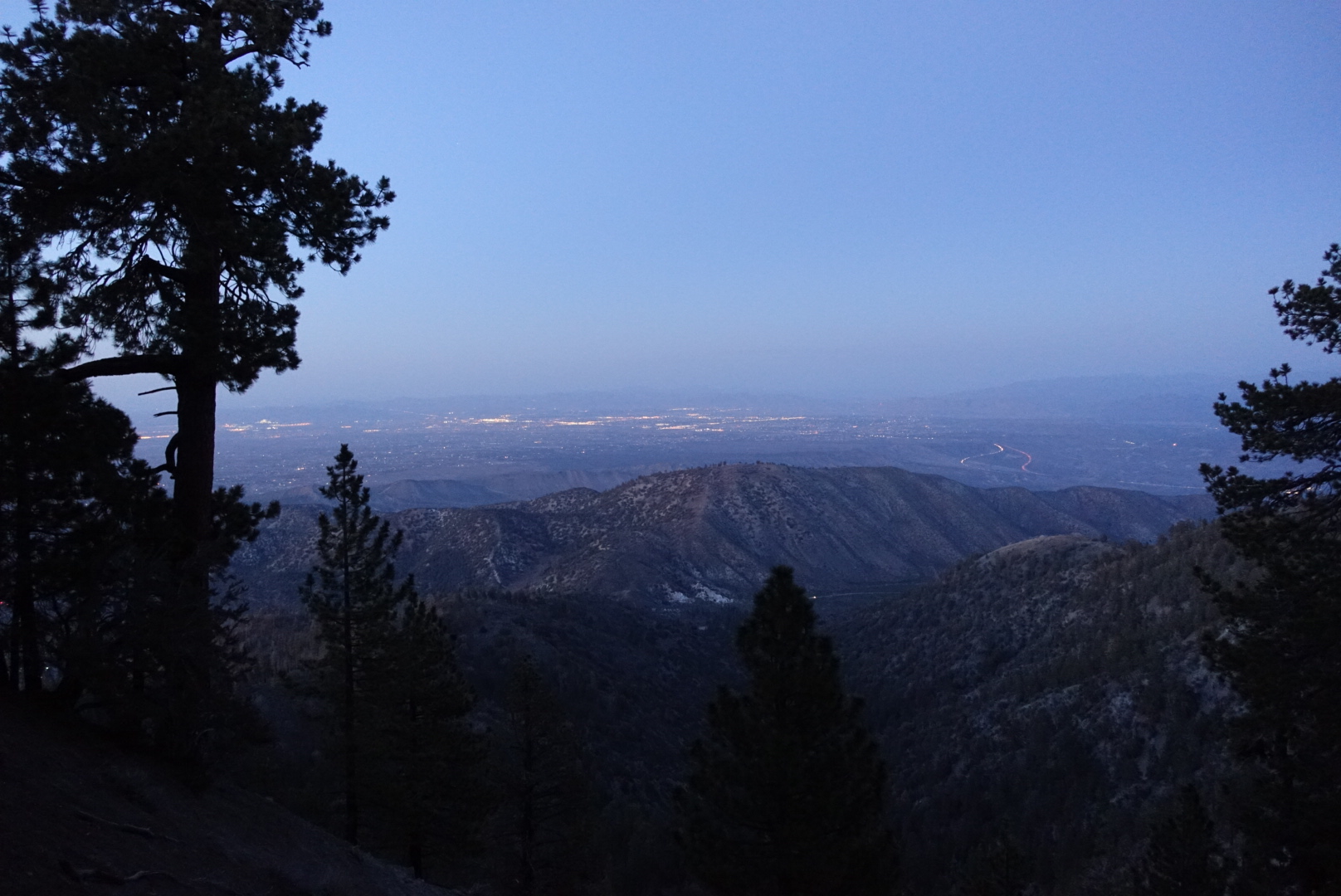
We ran into Jared again, a man we’d had lunch with back at the Paradise Valley Cafe. He was personable and talkative. He had worked for the government doing some diplomatic work with Indian reservations, and had been able to give us advice about the Lake Fire Alternate’s proximity to Cabazon land.
He had a trail name now: Poppy. He’d tried to explain the California Poppy to the Japanese couple, who’d nodded but didn’t really understand. The next time they saw him, they greeted him: “Hello, Poppy!” They thought he’d explained his name.
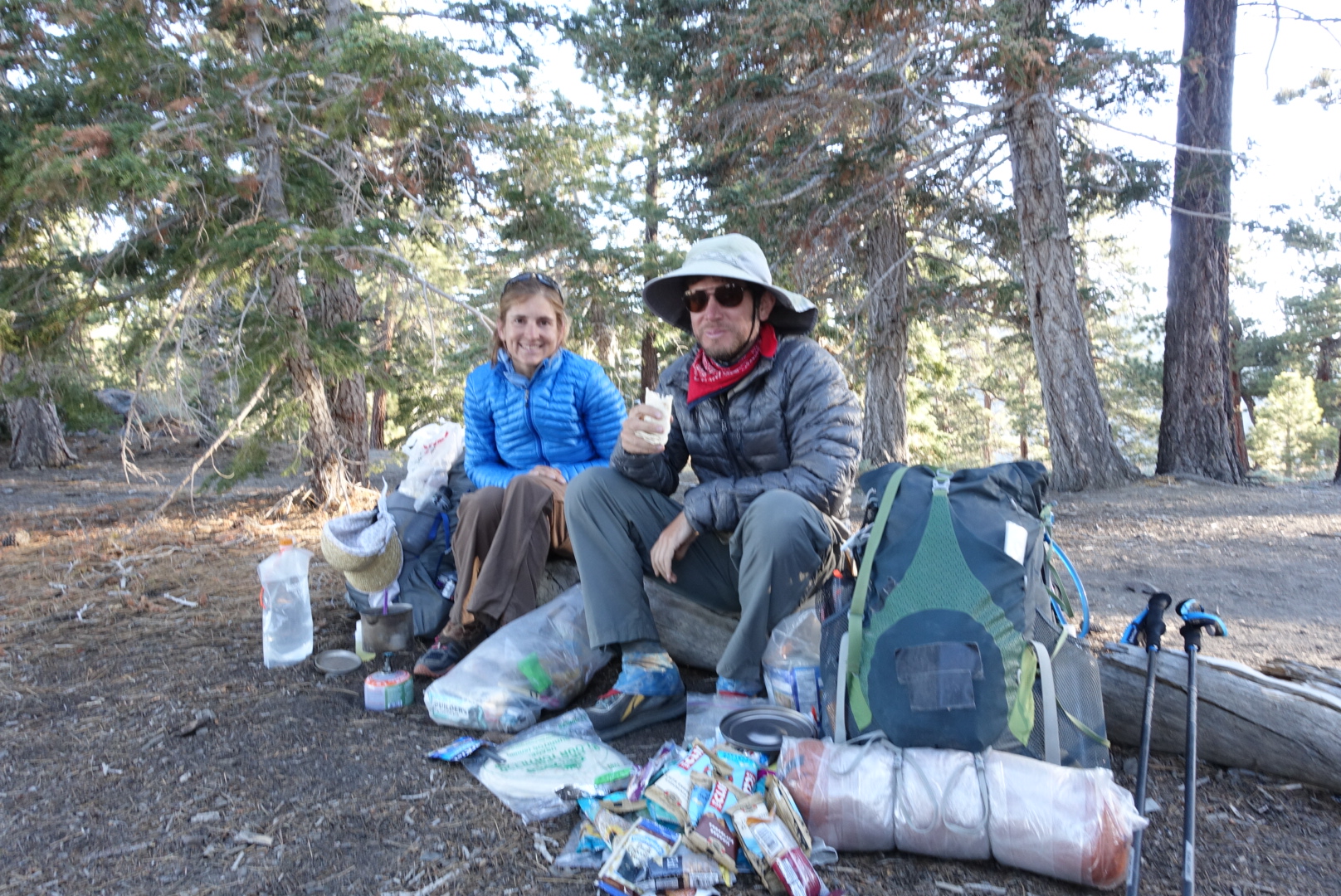
It was breezy at the campsite, so we set up our tents and went to bed before it got to cold.
